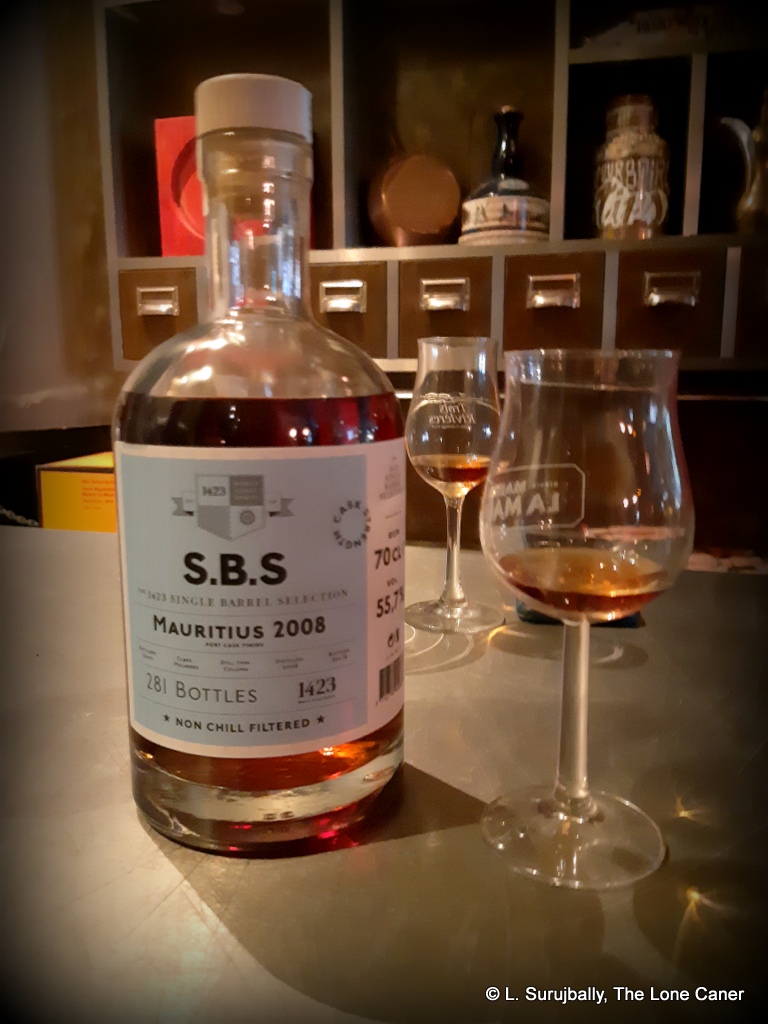
Like those tiny Caribbean islands you might occasionally fly over, the Maria Loca cocktail bar in Paris is so miniscule that if you were to sneeze and blink you’d go straight past it, which is what happens to us, twice. When Mrs. Caner and I finally locate it and go inside, it’s dark, it’s hectic, it’s noisy, the music is pounding and the place is going great guns. At the bar, along with two other guys, Guillaume Leblanc is making daiquiris with flair and fine style, greeting old customers and barflies and rumfest attendees, the shaker never still. Even though he doesn’t work there, he seems to know everyone by their first name, which to me makes him a top notch bartender even without the acrobatic or mixing skills.
In a dark corner off to the side are wedged Joshua Singh and Gregers Nielsen, a quartet of bottles in front of them. Part of the reason they’re here is to demonstrate the Single Barrel Selection of their Danish company (named “1423” after the number on that first barrel of rum the outfit ever bottled back in 2008) and how they fare in cocktails. Nicolai Wachmann and Mrs. Caner have been drafted to help out and I’m squished in there as well to do my review thing and take notes in the Little Black Book (since the Big Black Book didn’t fit into my pocket when I was heading out).
Three of these bottles are formal SBS releases by 1423, and there’s a Jamaican, a Trini and one from Mauritius. The fourth is a white-lightning tester from (get this!) Ghana, and I haven’t go a clue which one to start with. Nicolai has four glasses in front of him and somehow seems to be sipping from all four at once, no help there. Mrs. Caner, sampling the first of what will be many daiquiris this evening, and usually so fierce in her eye for quality rums, is raptly admiring Guillaume’s smooth drink-making technique while batting her eyes in his direction far too often for my peace of mind. Fortunately, I know he’s engaged to a very fetching young miss of his own, so I don’t worry too much.
“Any recommendations?” I ask the rotund Joshua who’s happily pouring shots for the curious and talking on background about the rums with the air of an avuncular off-season Santa Claus. How he can talk to me, pour so precisely, have an occasional sip of his own, discuss technical stuff and call out hellos to the people in the crowd all at the same time is a mystery, but maybe he’s just a better multi-tasker than I am.
“Try the Jamaican,” he advises, and disappears behind the bar.
“Not the Trinidadian?” I ask when he pops back up on this side, two new daiquiris in his hand. Mrs. Caner grabs one immediately, and, with the skill born of many vicious battles getting on-sale designer purses in the middle of frenzied mobs of other ladies, fends off Nicolai’s eager hands and shoves him into the wall in a way that would make a linebacker weep. He looks at me like this is my fault.
“It’s not a Caroni, so you might feel let down,” Josh opines, handing the second cocktail glass to another customer. “It’s Angostura, and you’re a rumdork, so…” He shrugs, and I wince.
Since I’m writing an on-again, off-again survey of rums from Africa (50 words and I’m done, ha ha), the Ghana white rum piques my interest, and I turn to Gregers, who is as tidy and in control as ever. I suspect he lined up his pens and papers with the edge of his desk in school. “The Ghana, you think?”
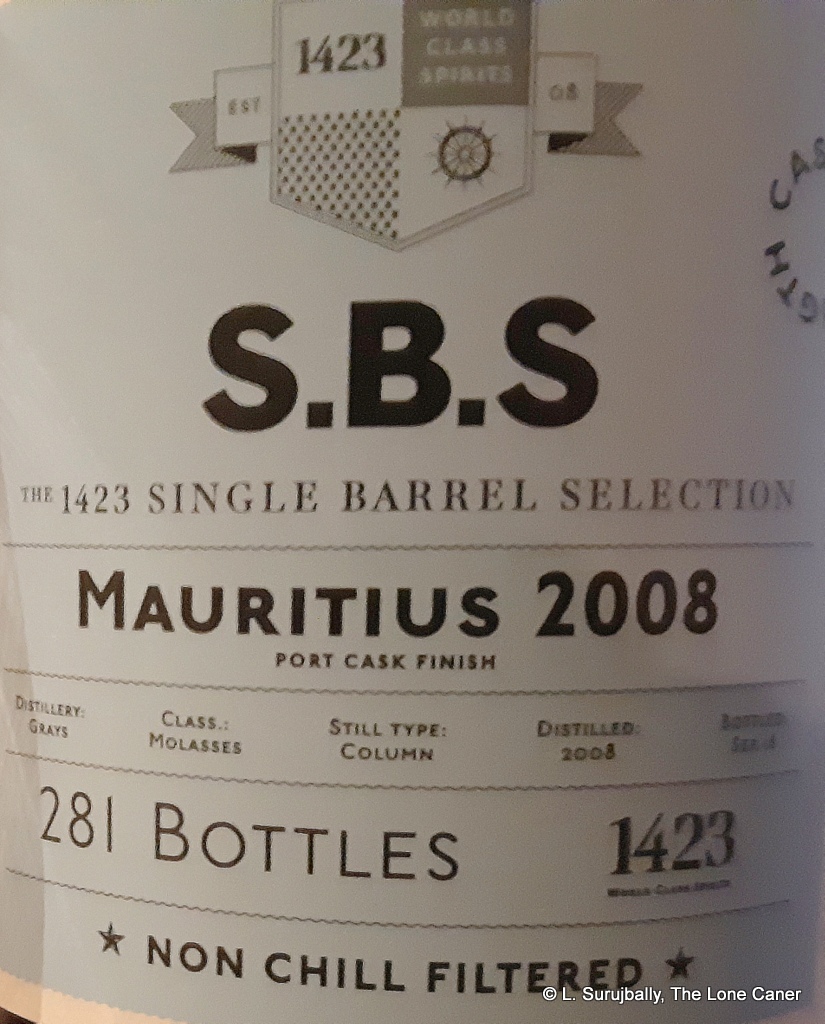 He considers for a moment, then shakes his head and pours me a delicate, neat shot of the Mauritius 2008. “Better start with this one. It’s a bit more…mellow. And anyway, you tried the Ghana last year in Berlin. If you need to, you can try it again later.”
He considers for a moment, then shakes his head and pours me a delicate, neat shot of the Mauritius 2008. “Better start with this one. It’s a bit more…mellow. And anyway, you tried the Ghana last year in Berlin. If you need to, you can try it again later.”
The rum winks invitingly at me. I take a quick moment to snap some pictures of the bottle, thinking again how far labels have come in the last decade. Velier started the trend, Compagnie des Indes provides great levels of detail, and others are following along, but what I’m seeing here is amazing. The label notes the distillery (Grays, which is a famed family name as well – they make the New Grove and Lazy Dodo line of rums but not the St. Aubins); the source, which in this case is molasses; the still type – column; distillation date – 2008; bottling date – 2018; and other throwaway details such as the non-chill-filtration, the port wine finish, the 281-bottle outturn, and the 55.7% ABV strength. I mean, you really couldn’t ask for much more than that.
I nose the amber spirit gently, and my eyes widen. Wow. This is good. It smells of toblerone, white chocolate, vanilla and almonds but there are also lighter and more chirpy notes swirling around that – gooseberries, ginger shavings, green grapes, and apples. And behind that are aromas of dark fruit like plums, prunes and dates, together with vague red-wine notes, in a very good balance. Musky, earthy smells mix with lighter and darker fruits in a really good amalgam – you’d never confuse this with a Jamaican or a Guyanese or a Caroni or a French island agricole. I glance over at Mrs. Caner to get a second opinion, but she’s ogling some glass-flipping thing Guillaume is doing and so I ask Nicolai what he thinks. He checks glass #2 on his table and agrees it is a highly impressive dram, just different enough from the others to be really interesting in its own way. He loves the way the finish adds to the overall effect.
As I’m scribbling notes into the LBB, I ask Gregers slyly, “Is there anything you’ve been told not to tell me about the rum?” He is like my brother, but business, blood and booze don’t always mix, trust is earned not freely given, and I’m curious how he’ll answer. Nicolai’s ears perk up and he pauses with his nose hanging over the third glass. Though he doesn’t talk much, his curiosity and rum knowledge are the equal of my own and he likes knowing these niggly little details too.
“Nope. Any question you have, we’ll answer.” Gregers and Joshua exchange amused looks. Truth to tell, there are two omissions which only a rum nerd would ask for or actively seek out. I wonder if they’re thinking the same thing I am. So:
“Additives? You don’t mention anything about them on the label.” And given how central such a declaration is these days to new companies who want to establish their “honesty” and street cred, an odd thing to have overlooked – at least in my opinion.
Joshua doesn’t miss a beat. He confirms the “no additives” ethos of the SBS line of rums, and it was not considered necessary to be on the label – plus, if some weird older gunk from Panama or Guyana, say, were to be bottled in the future and then found to be doctored by the original producer, maybe with caramel, then 1423 would not have egg over its face, which makes perfect sense. Then, before I ask, he and Gregers tell me that this rum is actually not from a single barrel but several casks blended together. Well…okay (there’s full detail in “other notes” below, for the deeply curious).

The bar is getting noisier, more crowded. Pete Holland of the Floating Rum Shack just turned up and is making the rounds, pressing the flesh, because he knows, like, everyone – alas, his pretty wife is nowhere in sight. Jazz and Indy Singh of Skylark are in-country but must have missed this event because no sign of their cheerful bearded forms. Yoshiharu Takeuchi of Nine Leaves is in center-court, telling a hilarious R-Rated story I cannot reprint here (much as I’d like to) of how he was mugged in Marseilles while taking a leak in an alleyway, and Florent Beuchet of the Compagnie is mingling – I shout a hello at him over the heads of several customers. He waves back. The cheerfully bearded and smiling Ingvar “Rum” Thomsen (journalist and elder statesman of the Danish rum scene) is hanging out next to his physically polar opposite, Johnny Drejer (tall, slim, clean-shaven); Johnny and I briefly discuss the new camera I helped him acquire, and some of his photographs and the state of the rumiverse in general. There are probably brand reps and other French rumistas in attendance, but I don’t recognize anyone else and the ones I do know are AWOL: Laurent is still on his round the world expedition with his family (but not the poussette), Cyril doesn’t attend these things and I don’t know Roger Caroni by sight. All I can see is that everyone is enjoying themselves thoroughly and the loud hum of intense and excited (and perhaps drunken) conversation is electric. The energy level of the bar is off the scale.
Guillaume has finished his cocktail twirling demo and lost my wife’s attention, I note happily. He’s mixing more drinks for another small group of people who just wandered in. Mrs. Caner is now deep in conversation with Nicolai about his marital status and that of her entire tribe of single female relatives. After landing me like a prize trout all those years ago, my pretty little wife has developed a raging desire to “help out” any single person of marriageable age — and she’s seen Hitch like forty-seven times, which doesn’t help. Anyway, they’re both ignoring the rums in front of them, so I roll my eyes at this blasphemy and continue on to the tasting.
And let me tell you, that Mauritius rum tastes as good as it smells, if perhaps a little sharper and drier on the tongue than the aromas might suggest. It really is something of a low-yield fruit bomb. Raspberries, strawberries, lemon peel, ginger and sherbet partied hard with the deeper flavours of prunes, molasses, vanilla, nuts, chocolate mousse, ice cream and caramel…and a touch of coca cola, tobacco and seaweed-like iodine. There’s even a sly hint of brine, thyme, and mint rounding things off, transferring well into a lovely smooth finish dominated by candied oranges, a sharp line of citrus peel, and a very nice red wine component that completes what was and remains, a really very good drink. It is like a curiously different Barbados rum, with aspects of Guyana and Jamaica thrown in for kick, but its quality is all its own, and hopefully allows the island to get more press in the years to come. For sure it is a rum to share around.
With some difficulty, I manage to catch Mrs. Caner’s eye and pass the glass over to her, because I think this is a rum she’d enjoy too. Somehow even after all the daiquiris she’s been getting, her eyes are clear, her speech is unslurred, her diction flawless, and I may be biased but I think she looks absolutely lovely. As she tries the SBS Mauritius, I can see she appreciates its construction as well and she compliments Joshua and Gregers on their selection. “This is great,” she remarks, then provides me with a whole raft of detailed tasting notes, which I have mysteriously lost and none of which somehow have made it into this essay.
Nicolai, over in his corner, is happy to cast some other comments on to the table regarding the SBS Mauritius, all positive. We all agree, and I tell Gregers, that this is one fine rum, and if I could, I’d buy one, except that I can’t. My wife, having delivered herself of her earth shaking opinion, immediately beelines over to the bar area where Guillaume’s fiancee and sister have just arrived, most likely because she’s had enough of all the testosterone in our corner and wants some real conversation with people who are specifically not certifiable about rum.
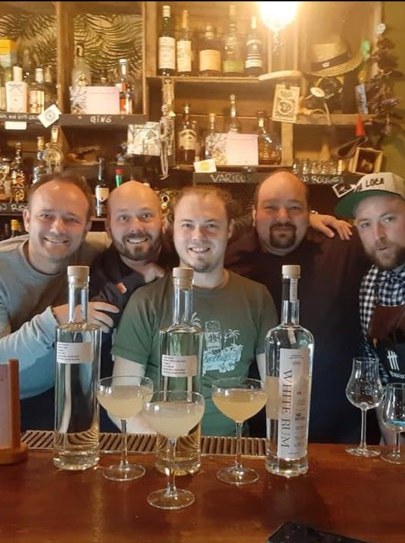
L-R – Nicolai, Gregers, Guillaume, Joshua and one of the bartenders from that evening whose name I did not get, sorry.
I want some fresh air so Joshua and I go outside the bar for a smoke (the irony does not escape us). The nighttime air of Paris is crisp and cool and I remember all the reasons I like coming here. We discuss 1423 and their philosophy, its humble beginnings more than ten years ago, though that remains outside the scope of this essay.
“So, the Mauritius was pretty good,” I remark, pleased to have started off this fest (and 2019) on a good rum, a tasty shot. He courteously does not ask for my score which for some obscure reason is all that some people want. “What do you think I should try next?”
He smiles, reminding me once again of Santa Claus in civilian clothes and taking a breather from gift giving, mingling with the common folk. “Oh the Jamaica, for sure. That’s a DOK, PX finished, pot still aged in 40-liter barrels…and let me tell you, there’s some really interesting stories behind that one -”
I stop him. My fingers are twitching. “Hang on. I gotta write that down. Let’s go inside, pour a shot, and you can tell me everything I need to know while I try it. I don’t want to miss a thing.”
And while it’s not exactly relevant to the Mauritius rum I’m supposed to be writing about here, that’s pretty much what we ended up doing, on a cool evening in the City of Lights, spent in the lively company of my beautiful wife, and assorted boisterous, rambunctious geeks, reps, writers, drinkers, bartenders and simply good friends. You just can’t do a rum tasting in better surroundings than that.
(#620)(87/100)
Other Notes
- In one of those curious coincidences, the Fat Rum Pirate penned his own four-out-of-five star review of the same rum just a few days ago. However, the first review isn’t either of ours, but the one from Kris von Stedingk, posted in December 2018 on the relatively new site Rum Symposium. He was also pretty happy with it
- Background on the rum itself:
- Joshua met with a rep from Grays from Mauritius a few years ago at the Paris Rhumfest; he brought a number of different cask samples from the warehouse. 1423 ended up choosing two, which were about 9 years at this time
- The first was aged seven years in a 400-liter French Limousin oak, followed by two more in Chatagnier (Chestnut).
- The second was again aged seven years in a 400-liter French Limousin oak, followed by two years in Port.
- 1423 ordered both of them but ended up receiving 400 liters of the Chatagnier cask and 120 liters of the Port both now with another ageing year in their respective casks. All of this was blended together when delivered to Denmark and the 2018 release was basically the first 200 liters, all tropical aged. The remaining 320 liters are still in the Denmark warehouse waiting for a good idea and the right time to release.
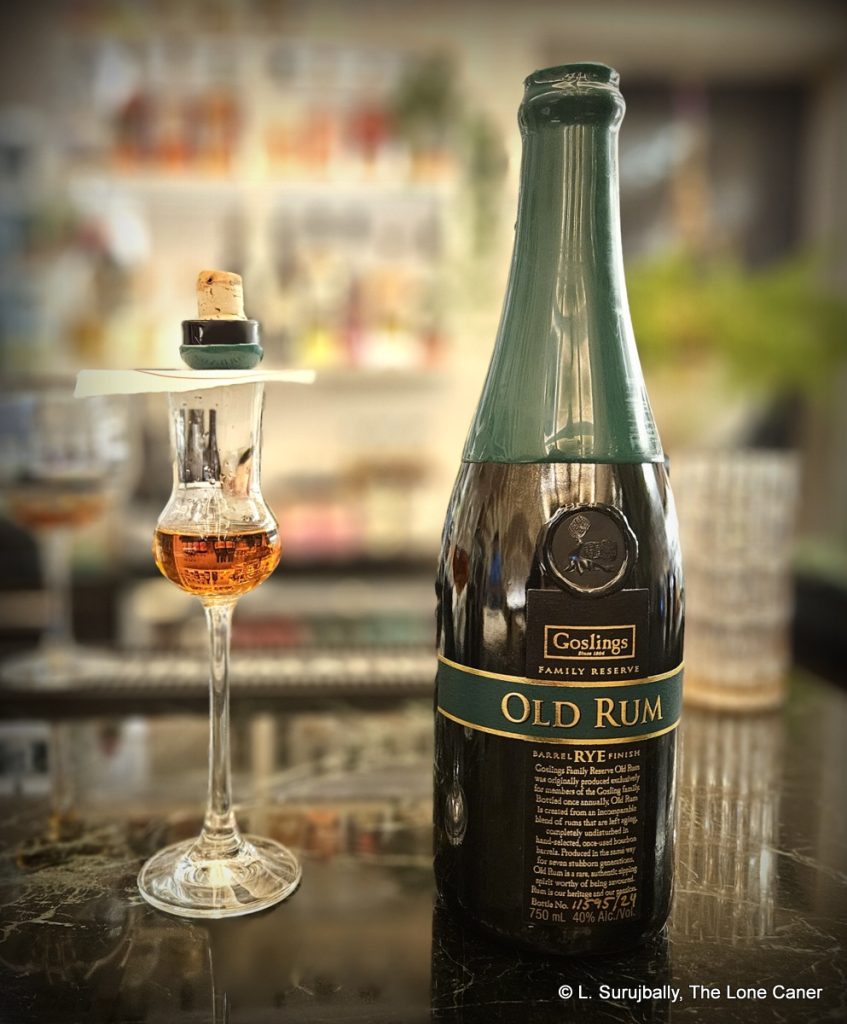 The Family Reserve Old Rum released by Gosling’s is, aside from the single barrel “Papa Seal” edition, probably their top end, limited edition, premium rum, and depending on where you are, costs around CAN$80-100. I’m not sure how regularly they come out, since this is not mentioned on the bottle labels or the website, but based on secondary sources, I think it’s an annual thing. The original release, which was first seen in the early 2000s and is not a seriously limited anything, is the most commonly seen.
The Family Reserve Old Rum released by Gosling’s is, aside from the single barrel “Papa Seal” edition, probably their top end, limited edition, premium rum, and depending on where you are, costs around CAN$80-100. I’m not sure how regularly they come out, since this is not mentioned on the bottle labels or the website, but based on secondary sources, I think it’s an annual thing. The original release, which was first seen in the early 2000s and is not a seriously limited anything, is the most commonly seen.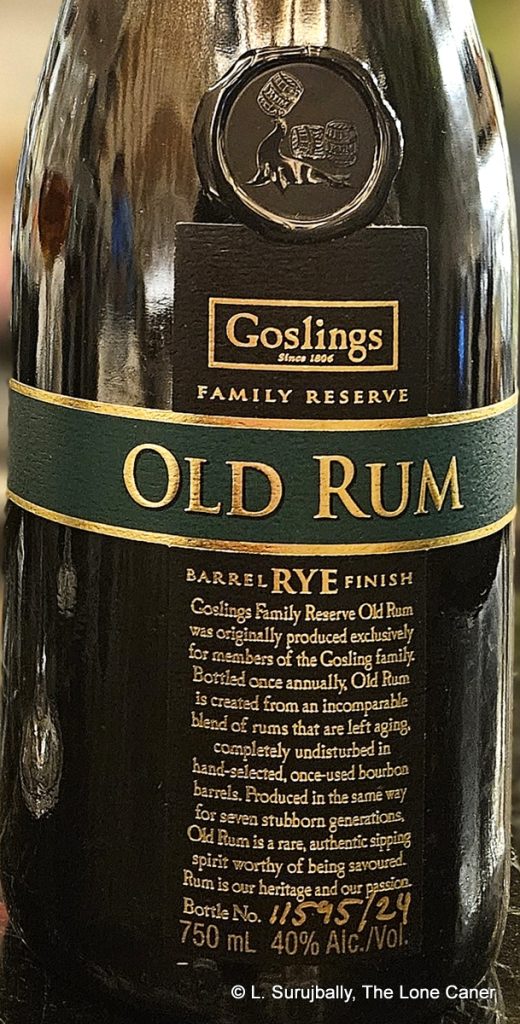 It’s as warm and and easy on the palate as the nose – there is no aggressiveness here. That’s both a good and a bad thing, depending on your preferences, but I will say it’s really pleasant. The tastes hearken to light citrus (tangerines, ruby grapefruit), with additional notes of bubble gum, black pepper, vanilla, cinnamon, toffee, honey, oak, wet coffee grounds. The finish is consistent with the Original FR edition, which is to say, nothing special, repeating all the notes we’ve already seen on the nose and the palate – dried fruits, honey, pepper, slight citrus, vanilla and some sweet..
It’s as warm and and easy on the palate as the nose – there is no aggressiveness here. That’s both a good and a bad thing, depending on your preferences, but I will say it’s really pleasant. The tastes hearken to light citrus (tangerines, ruby grapefruit), with additional notes of bubble gum, black pepper, vanilla, cinnamon, toffee, honey, oak, wet coffee grounds. The finish is consistent with the Original FR edition, which is to say, nothing special, repeating all the notes we’ve already seen on the nose and the palate – dried fruits, honey, pepper, slight citrus, vanilla and some sweet..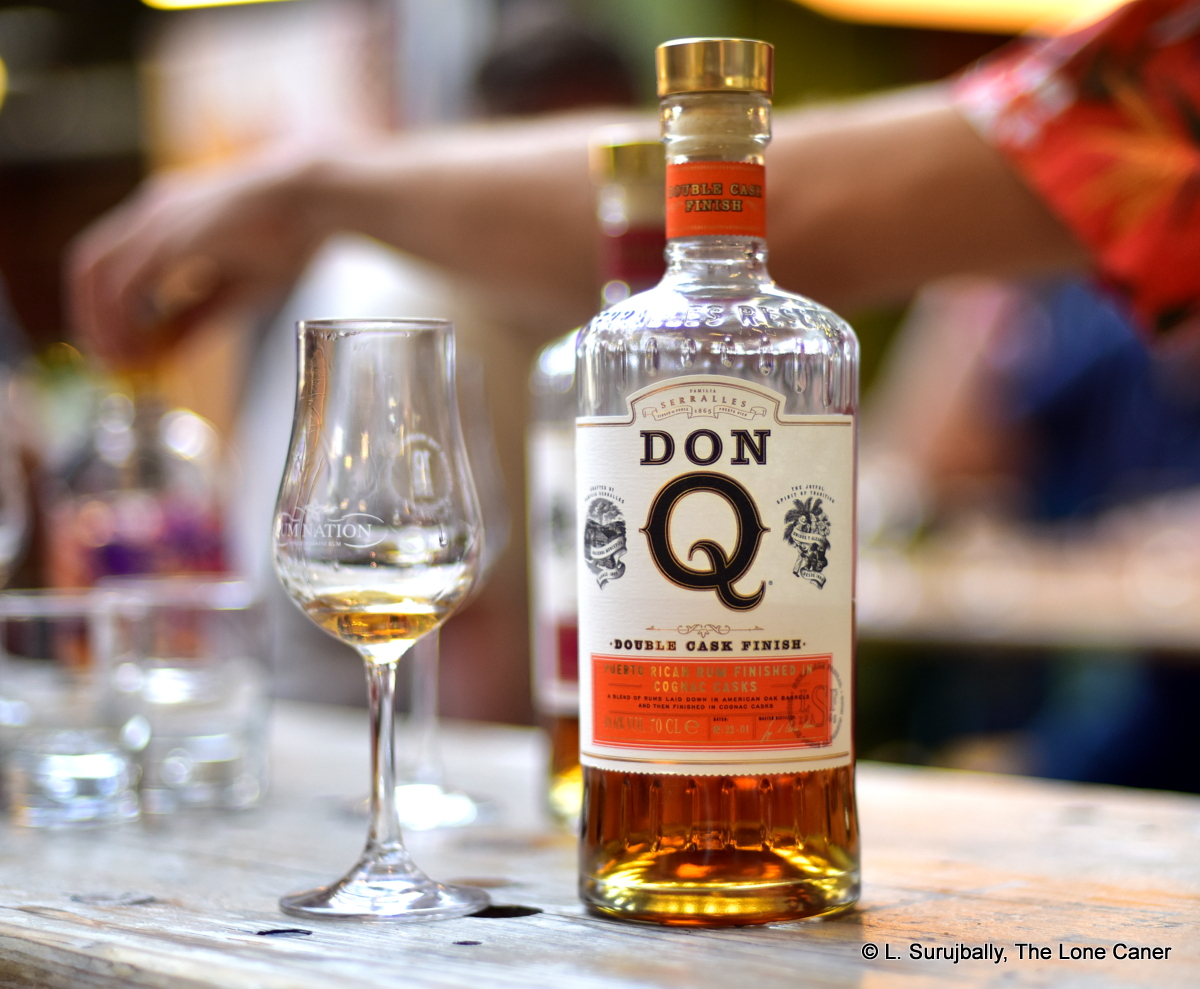
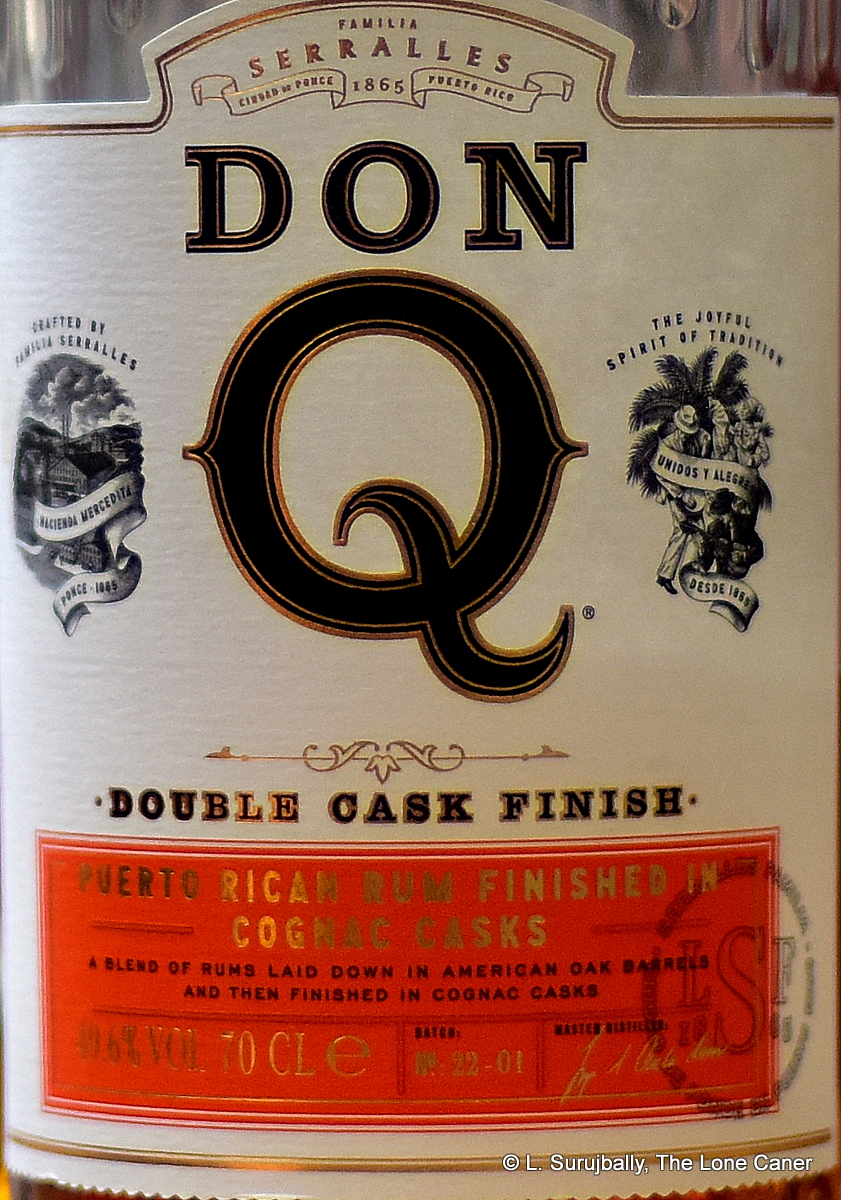
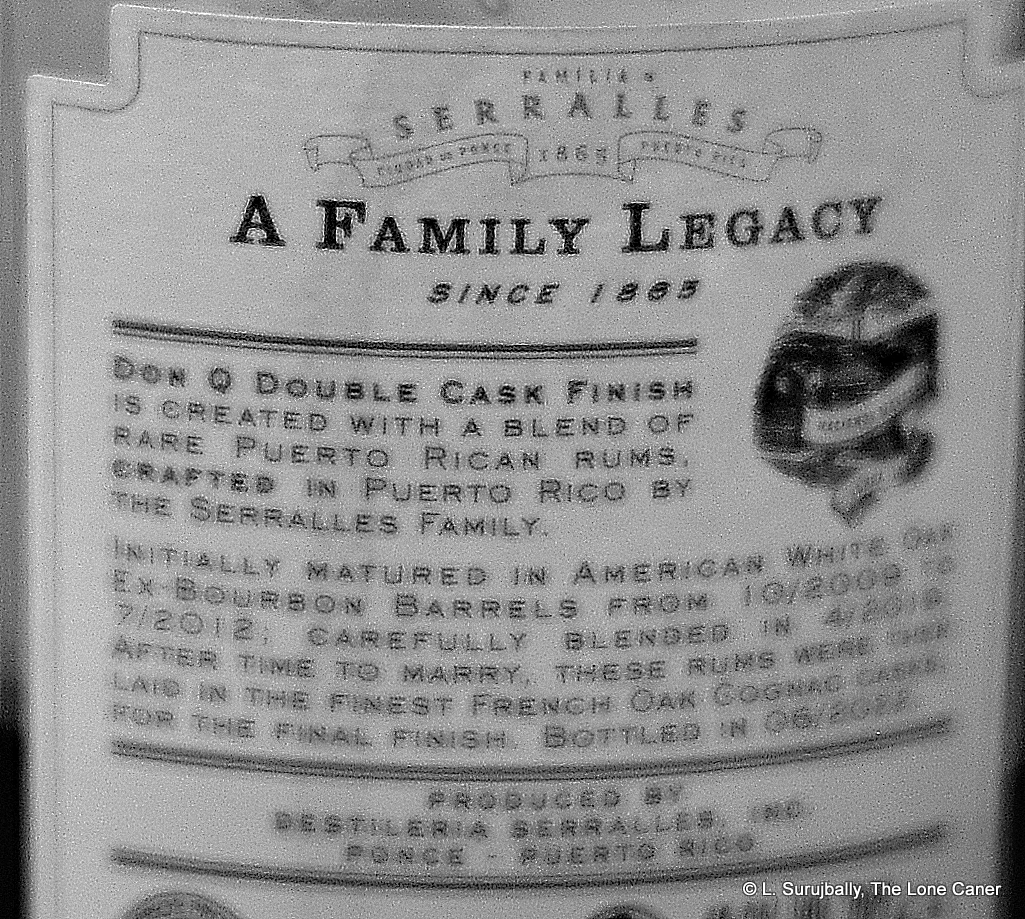
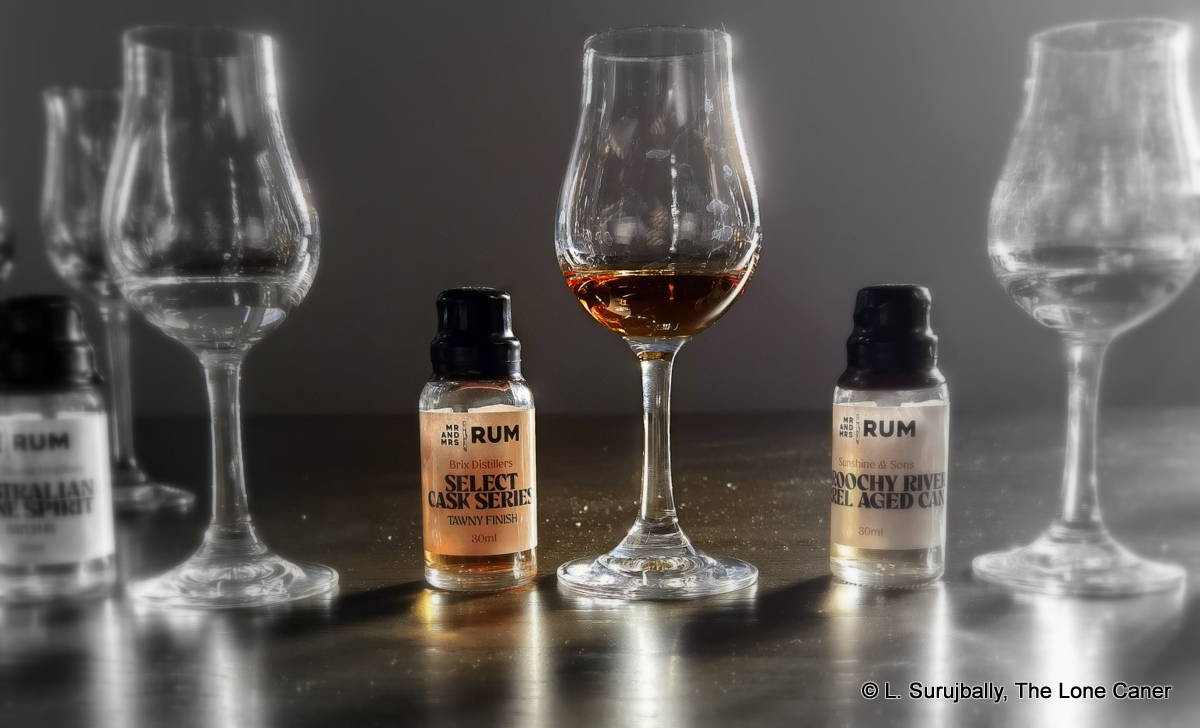
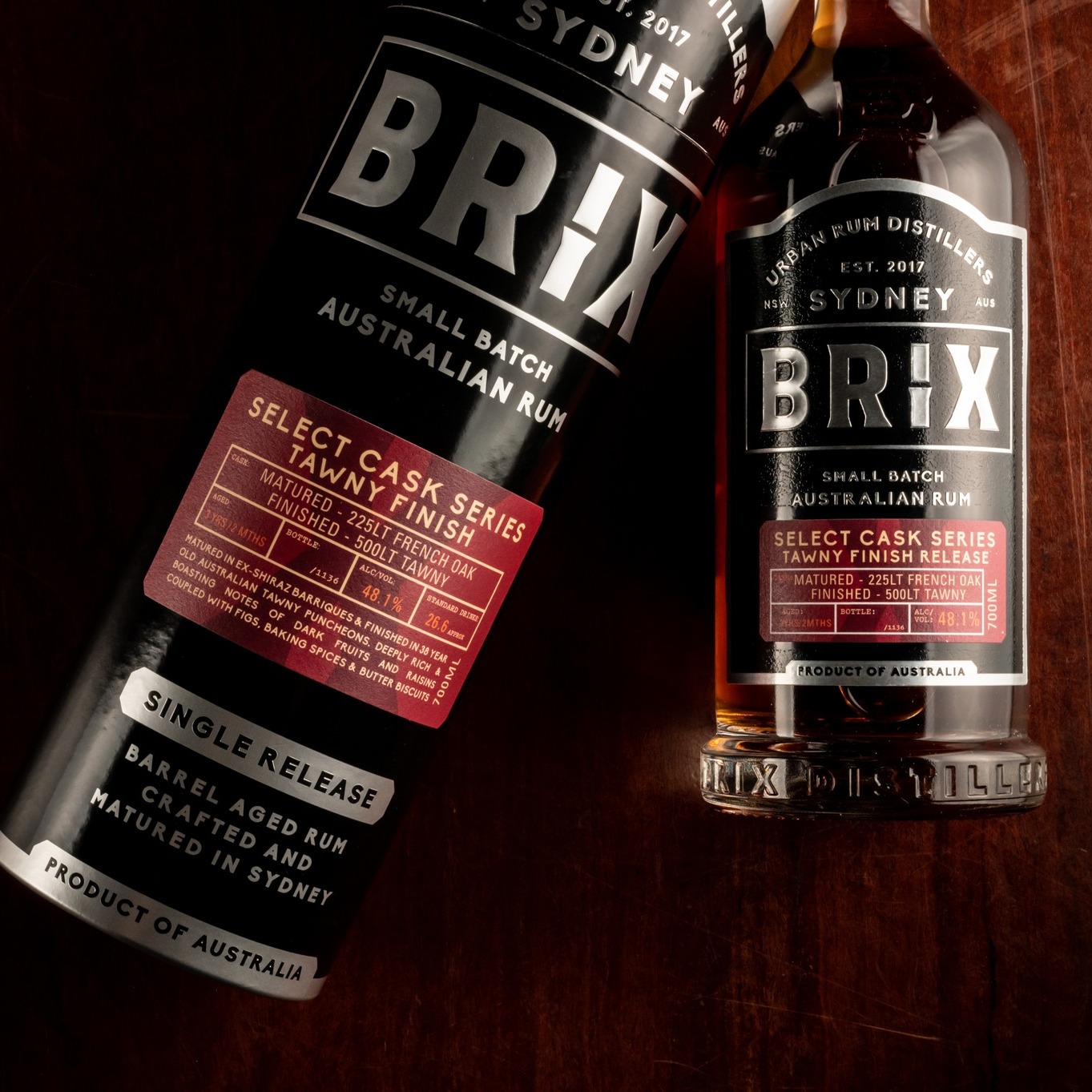
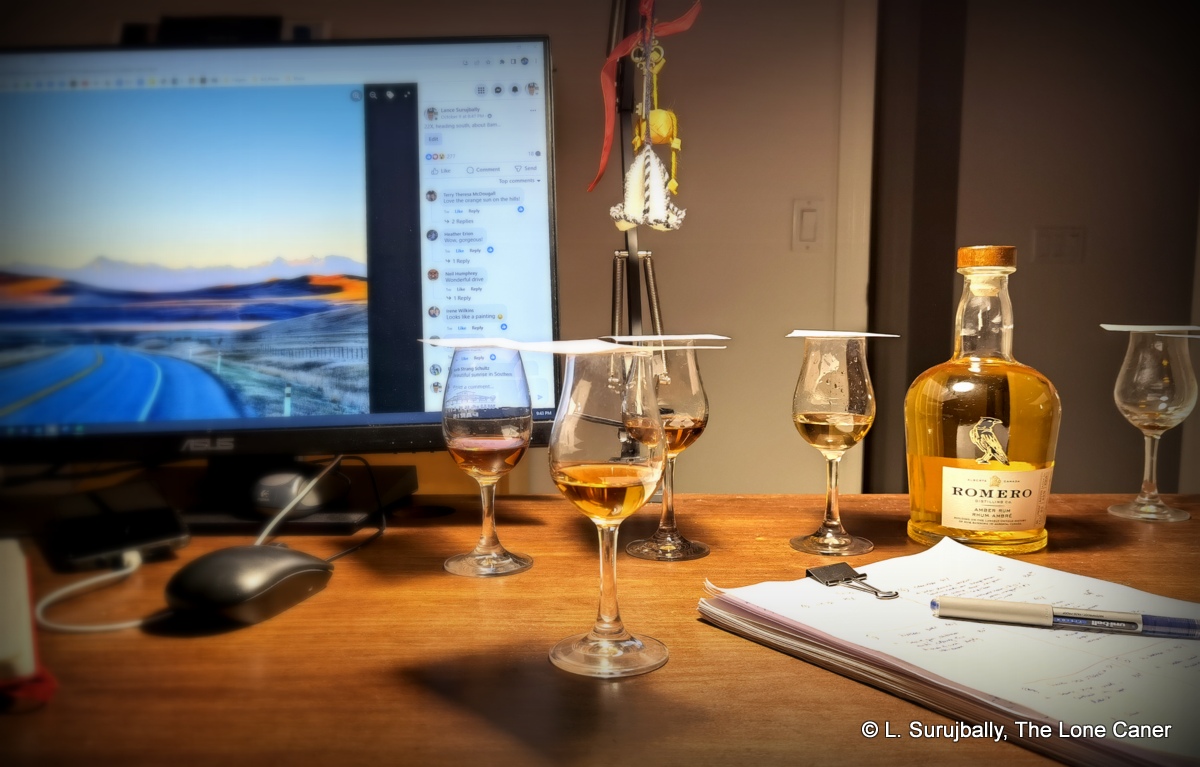
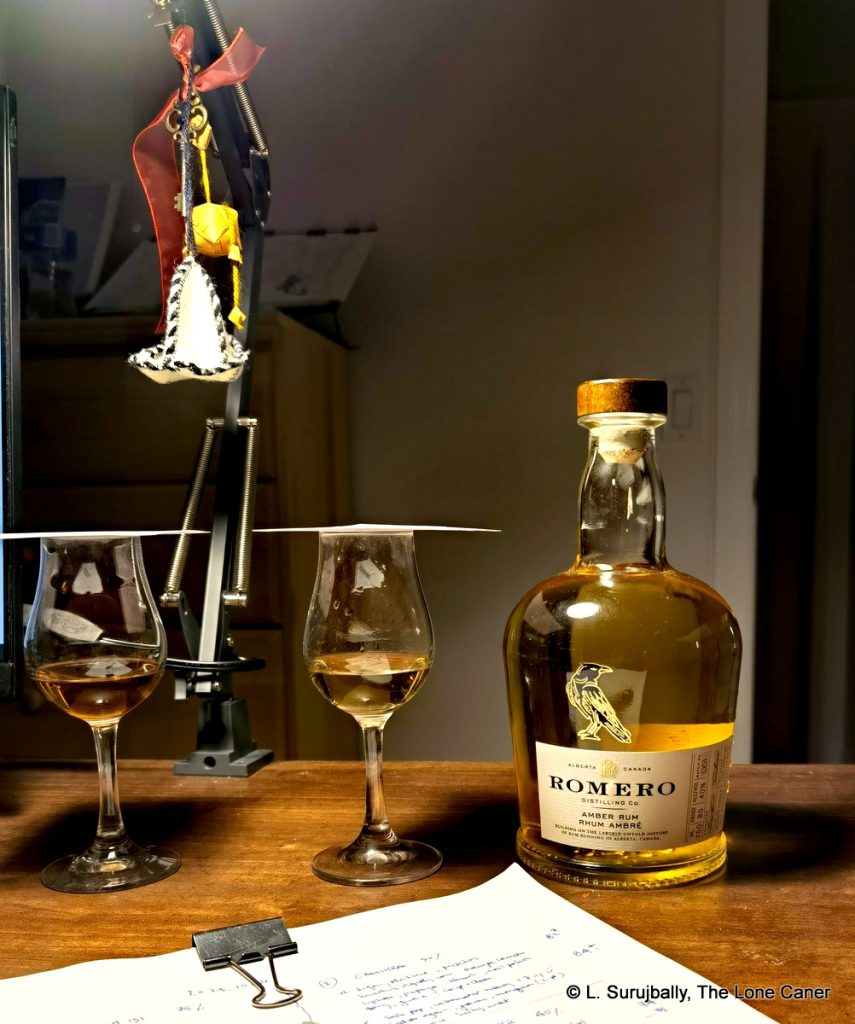
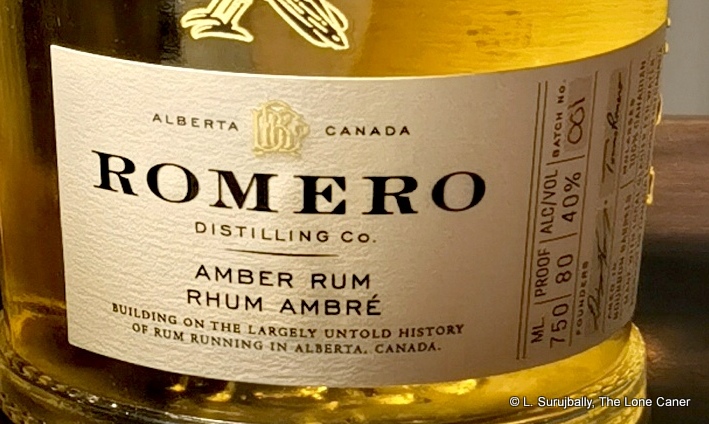


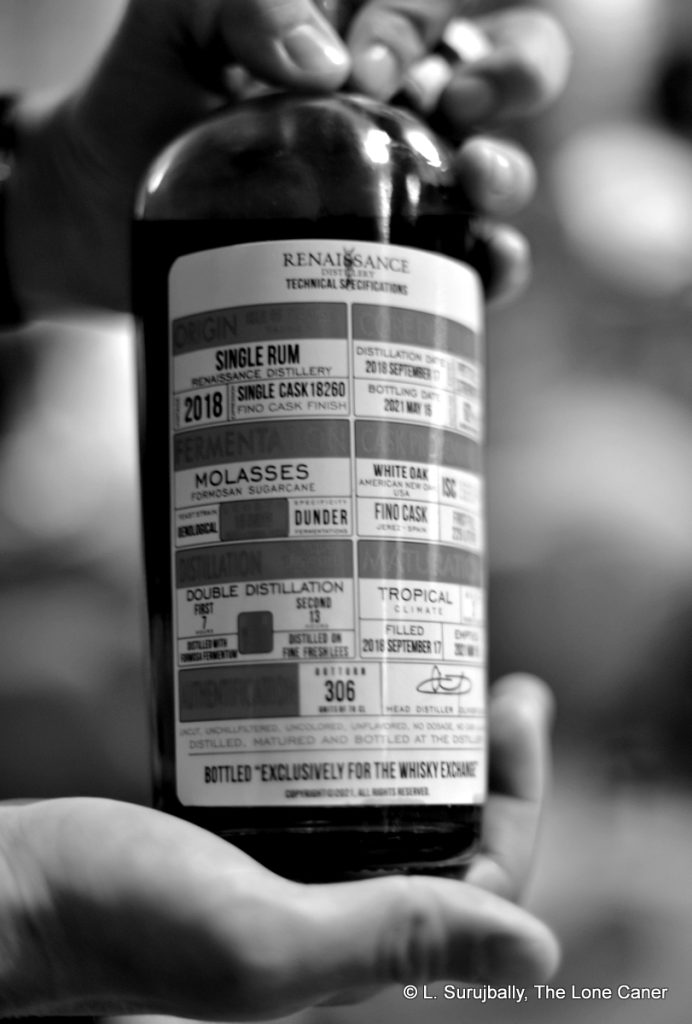
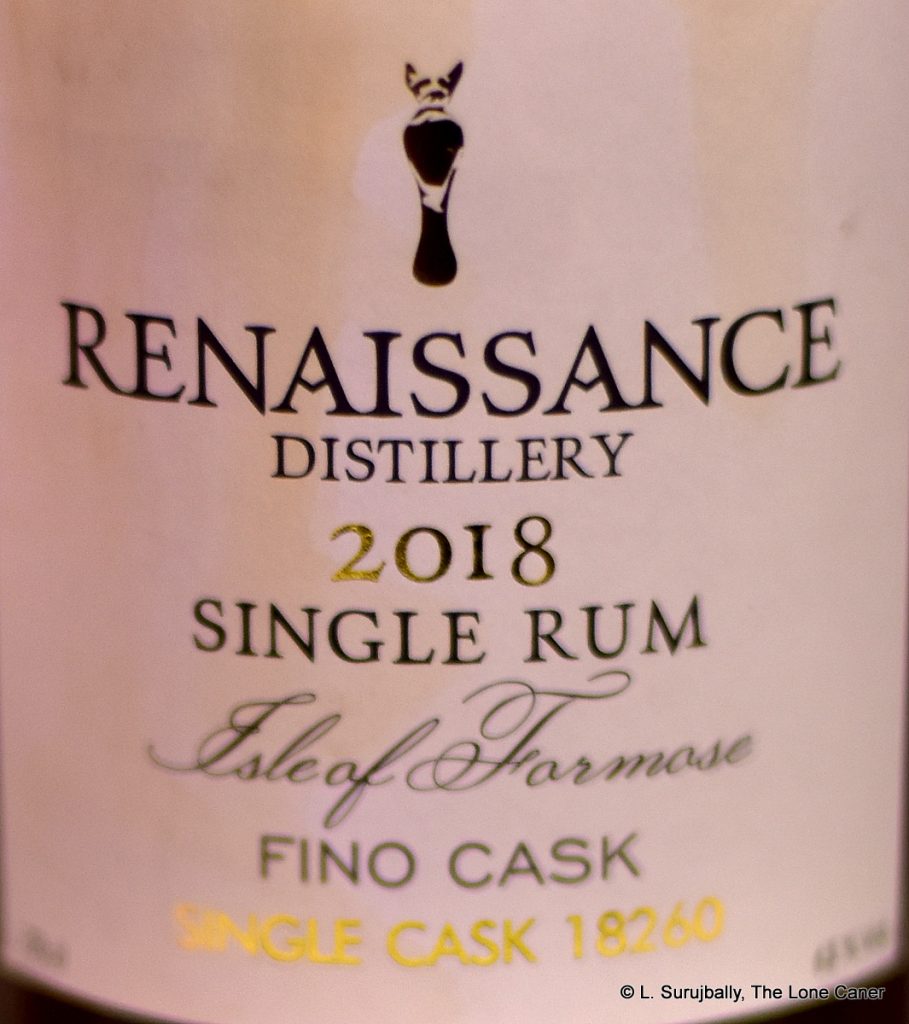
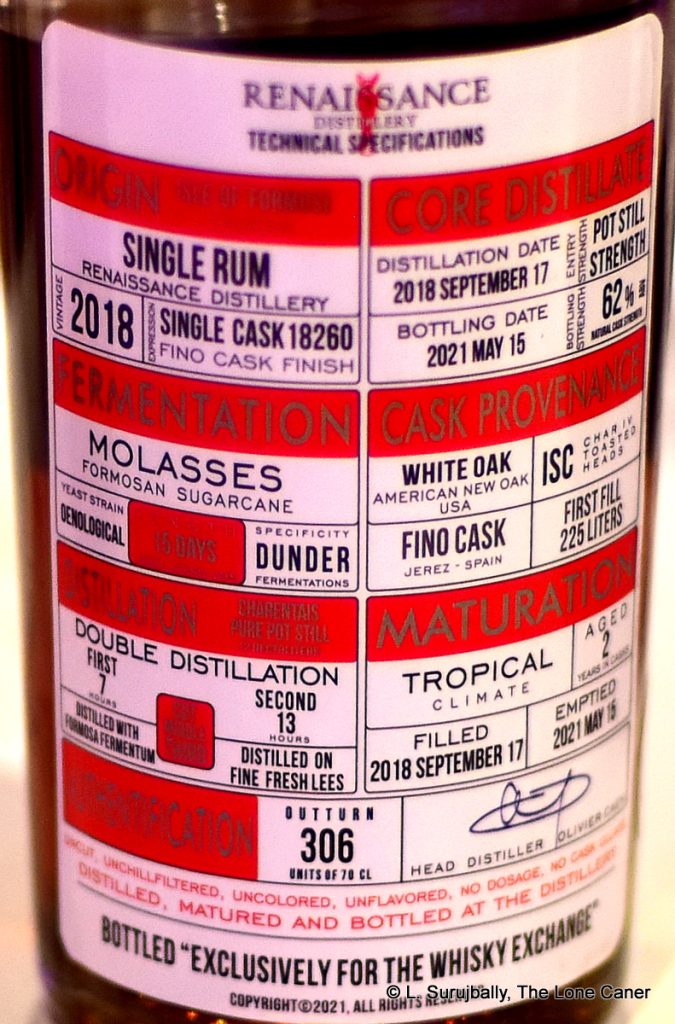
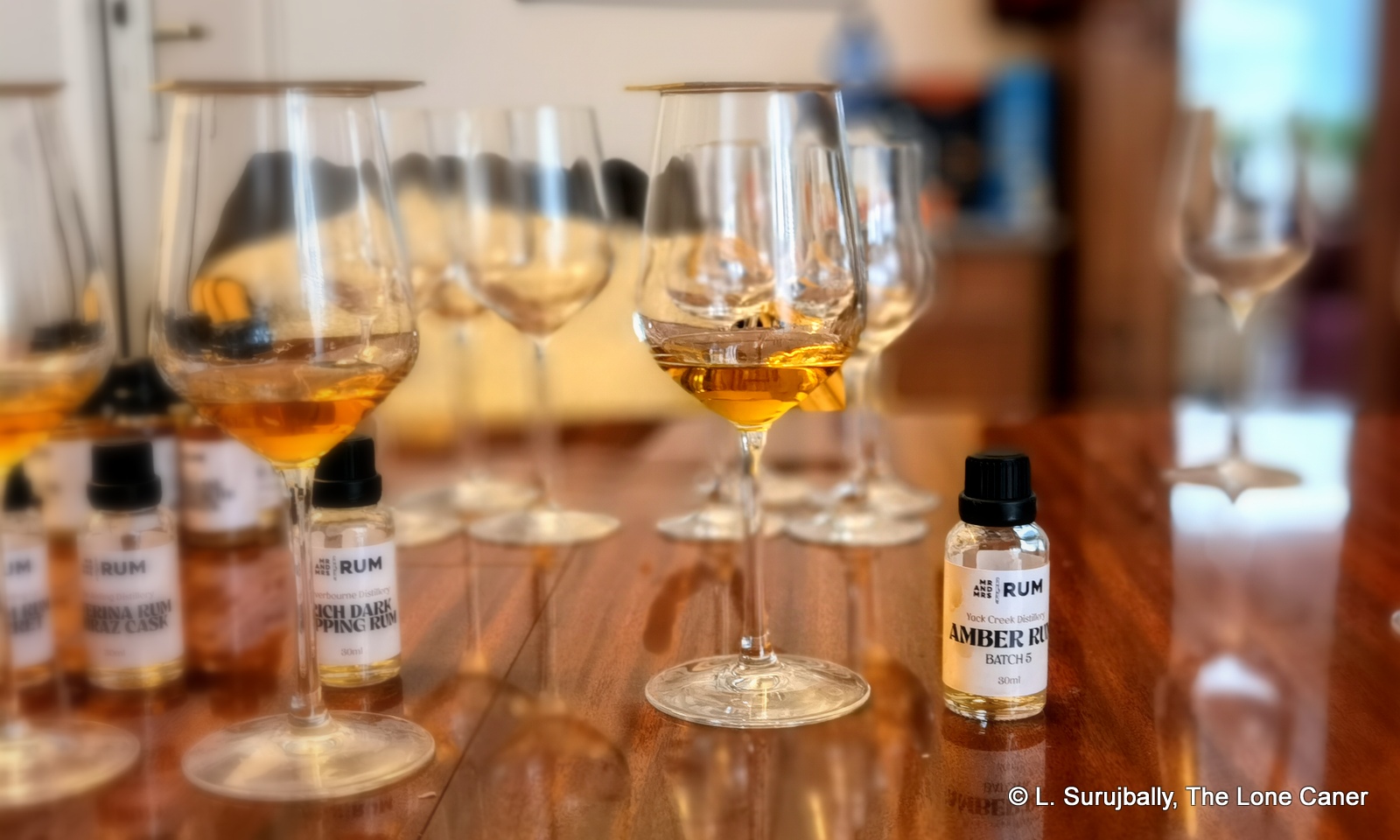
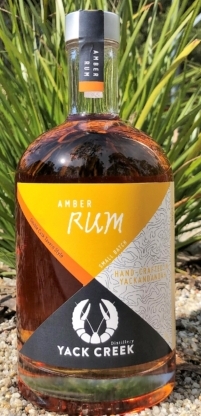
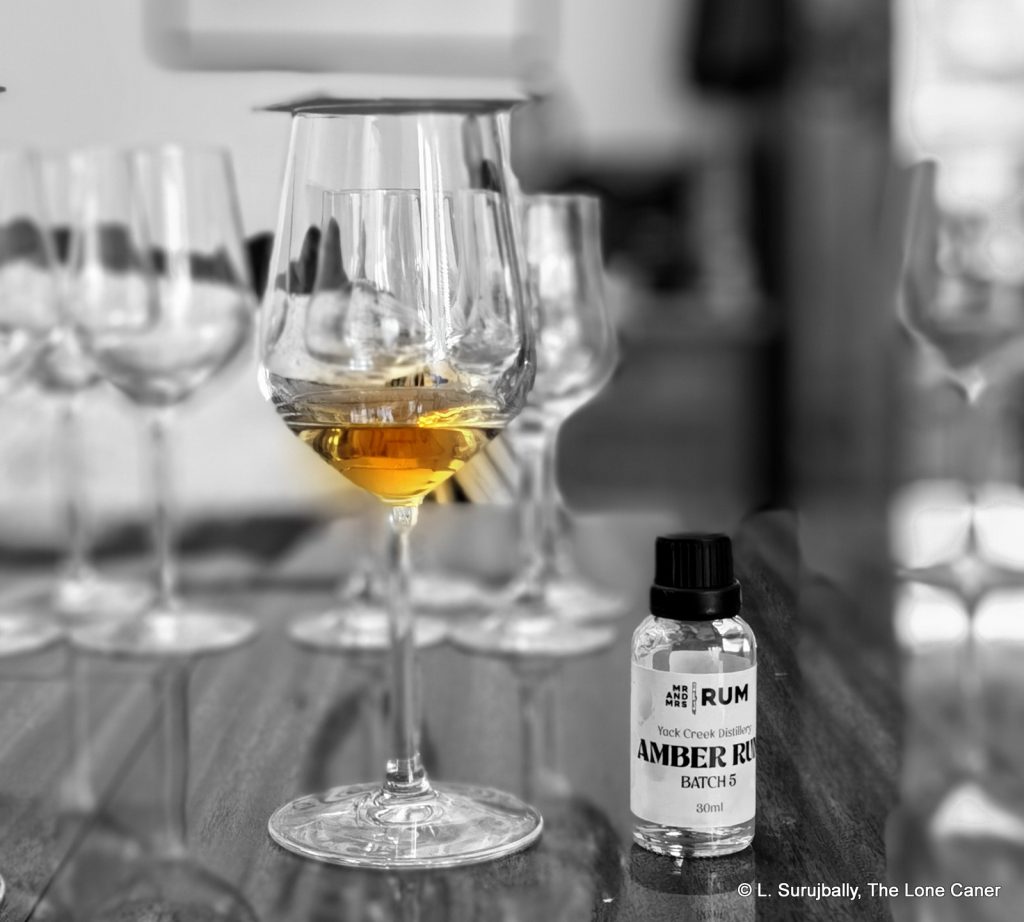
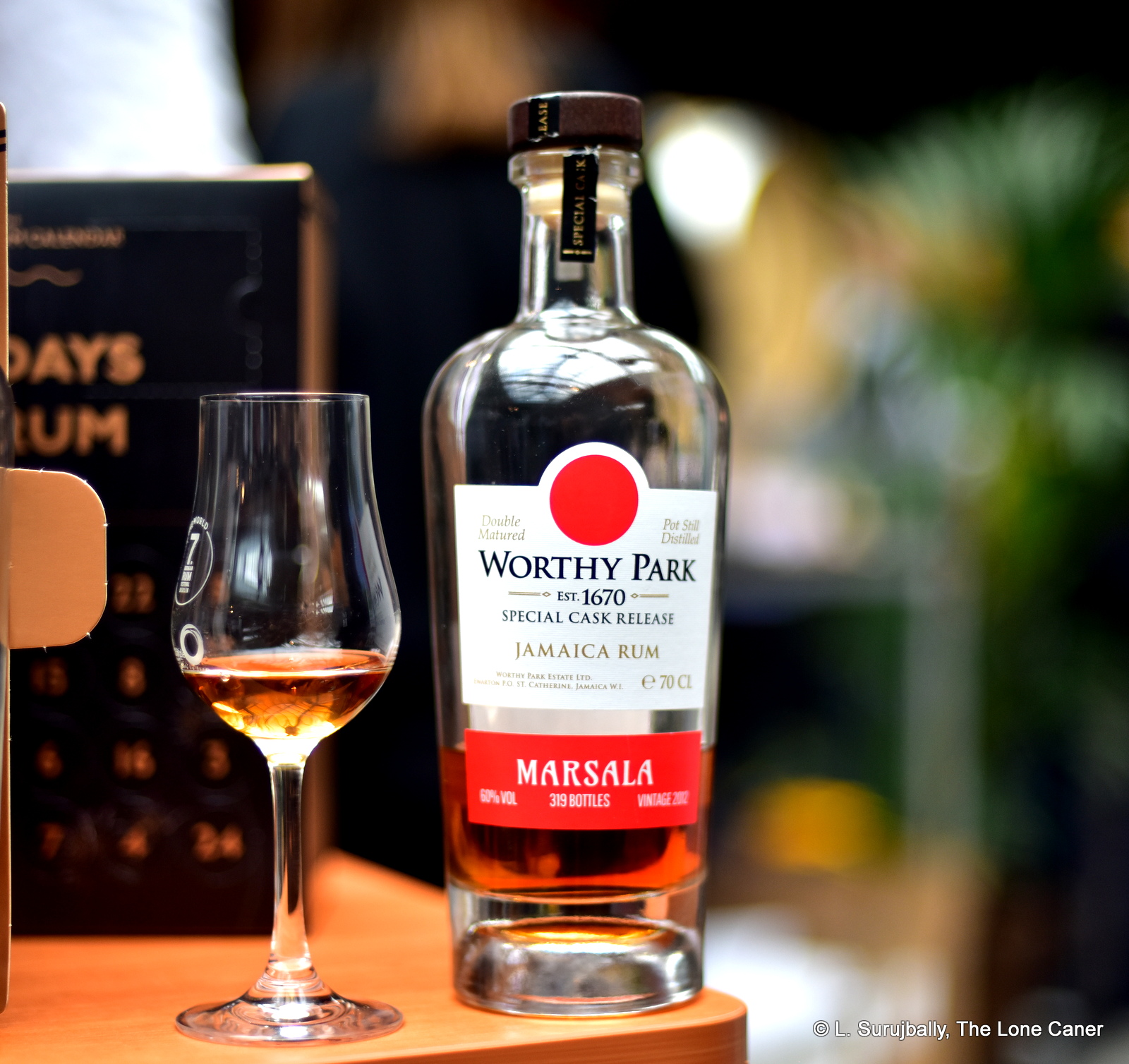
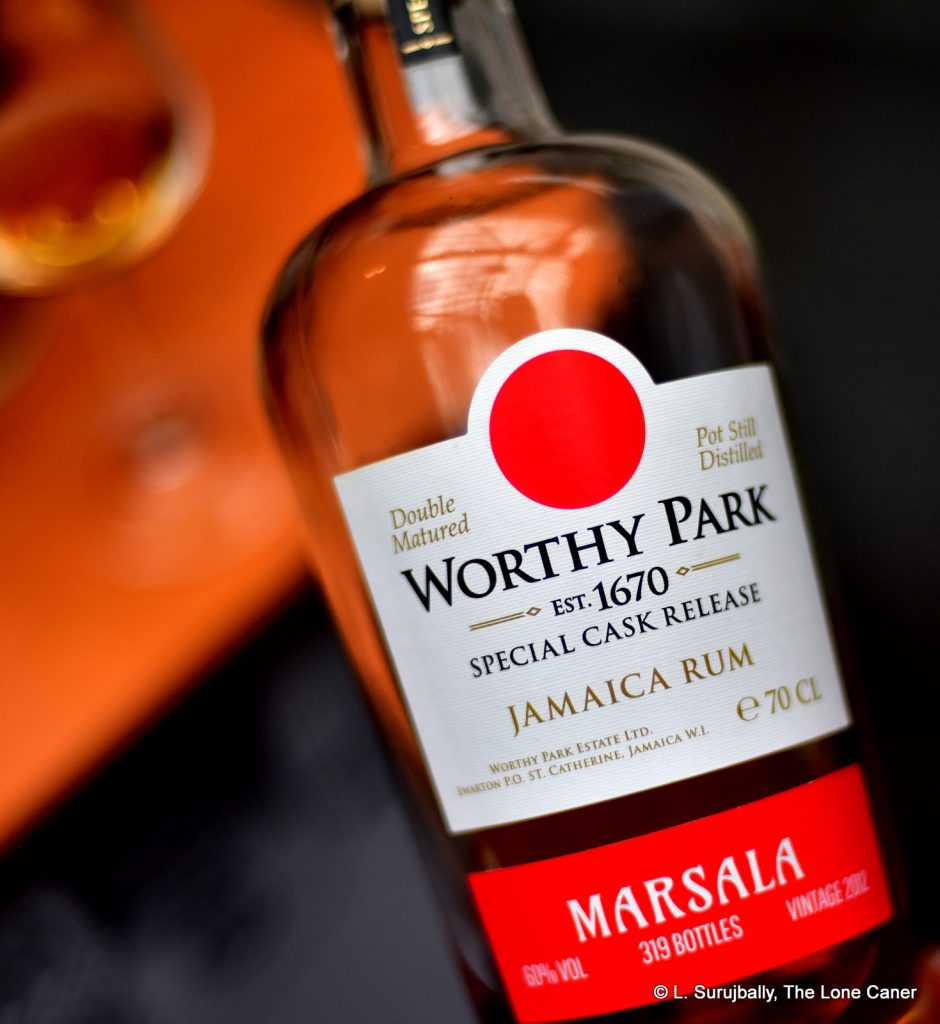
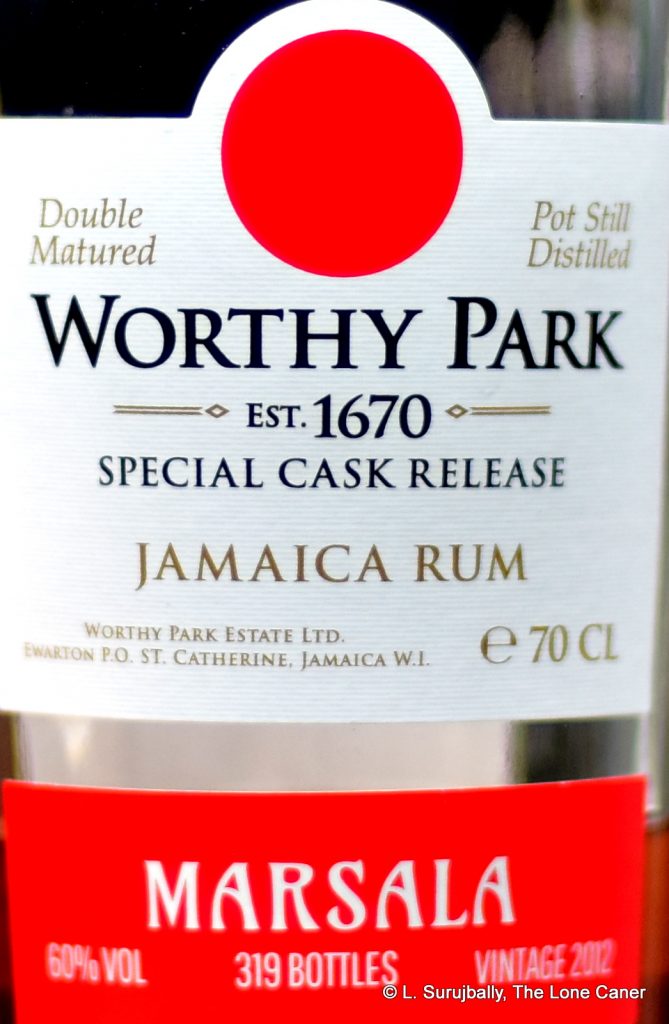
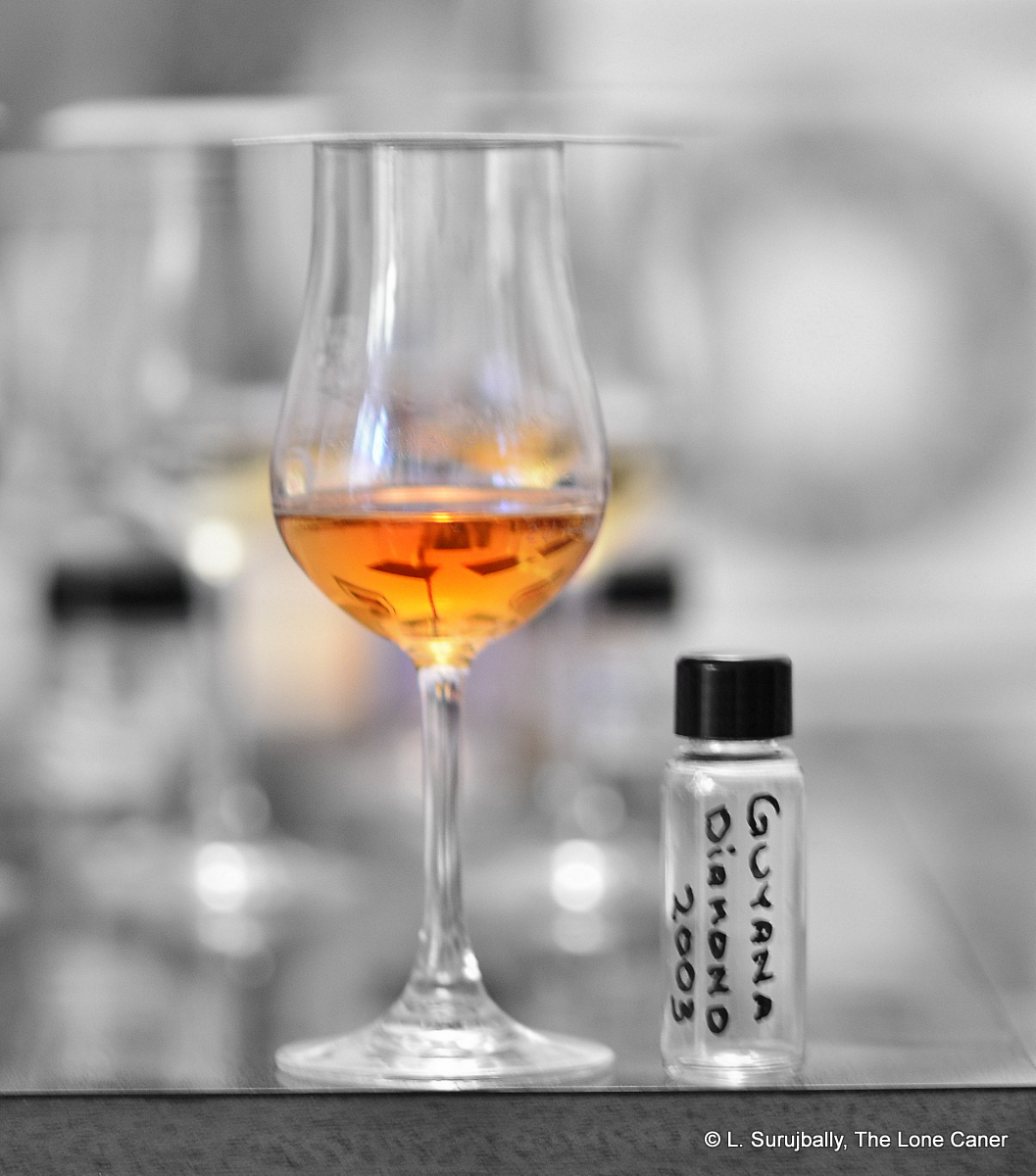
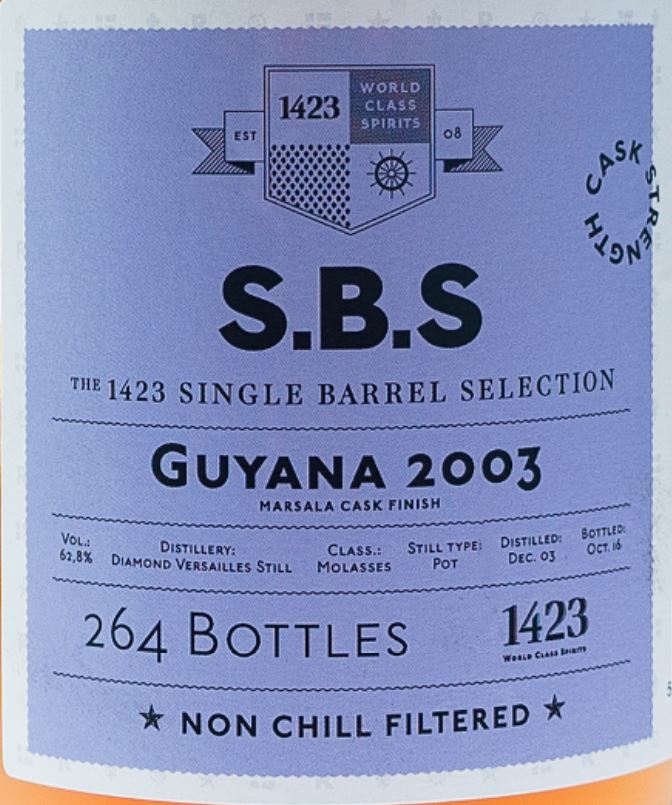 My own preference has always been for the stern elegance of the Port Mourant, and the Enmore coffey still produces rums that are complex, graceful and sophisticated when done right. But the Versailles still is something of an ugly stepchild – you’ll go far and look long to find an unqualified positive review of any rum it spits out. I’ve always felt that it takes rare skill to bring the rough and raw VSG pot still profile to its full potential…none of the familiar indies has had more than occasional success with it, and even Velier never really bothered to produce much Versailles rum at the height of
My own preference has always been for the stern elegance of the Port Mourant, and the Enmore coffey still produces rums that are complex, graceful and sophisticated when done right. But the Versailles still is something of an ugly stepchild – you’ll go far and look long to find an unqualified positive review of any rum it spits out. I’ve always felt that it takes rare skill to bring the rough and raw VSG pot still profile to its full potential…none of the familiar indies has had more than occasional success with it, and even Velier never really bothered to produce much Versailles rum at the height of 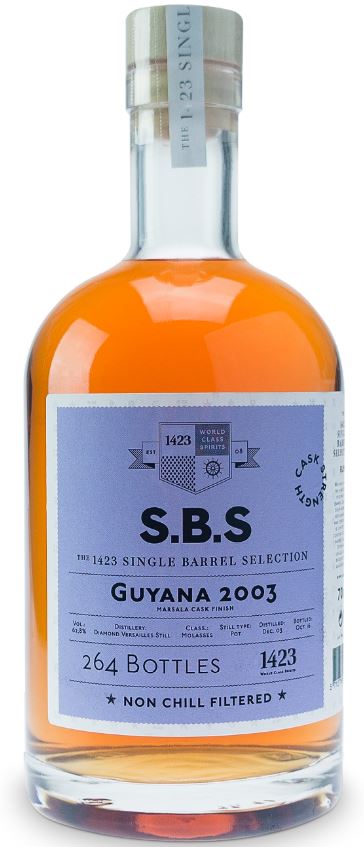 There has been occasional confusion among the stills in the past: e.g. the
There has been occasional confusion among the stills in the past: e.g. the 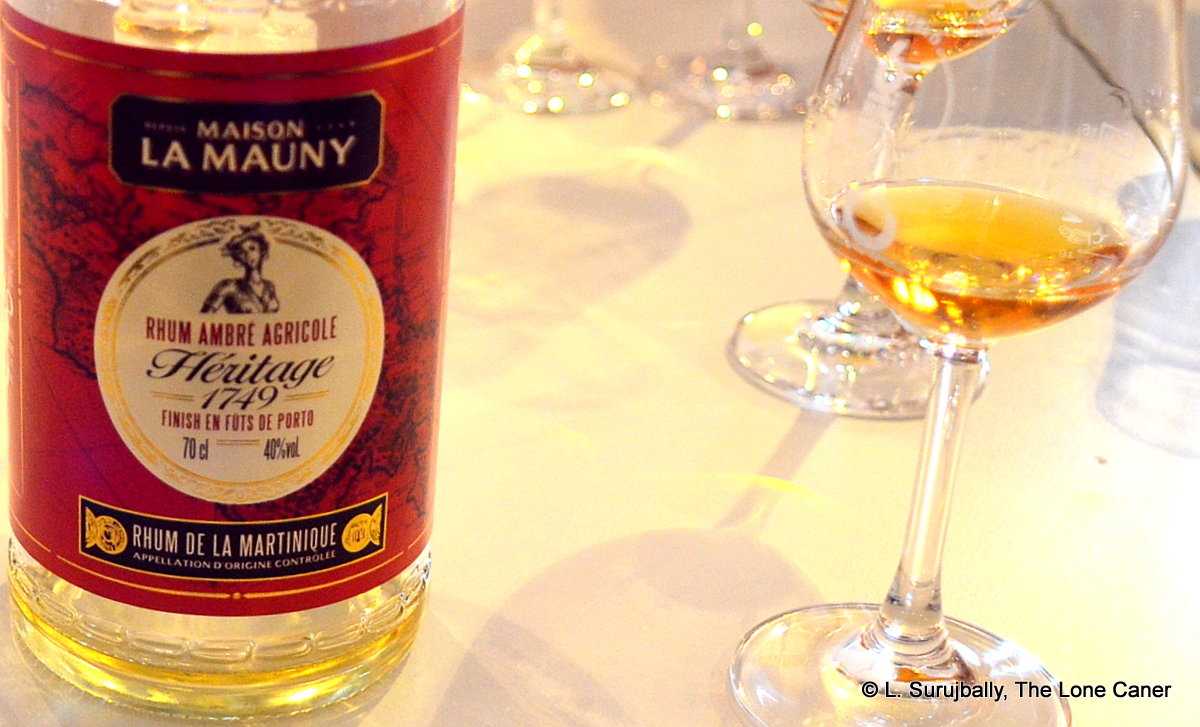
 Okay so, on to palate. Straw yellow in the glass, it was softer and less intense, which, for a forty percenter, was both good and bad. Here the grassy and herbal notes took on more prominence, as did citrus, some tart unsweetened yoghurt, honey and cane juice. The youth was evident in the slight sharpness and lack of real roundness – the two years of ageing had
Okay so, on to palate. Straw yellow in the glass, it was softer and less intense, which, for a forty percenter, was both good and bad. Here the grassy and herbal notes took on more prominence, as did citrus, some tart unsweetened yoghurt, honey and cane juice. The youth was evident in the slight sharpness and lack of real roundness – the two years of ageing had 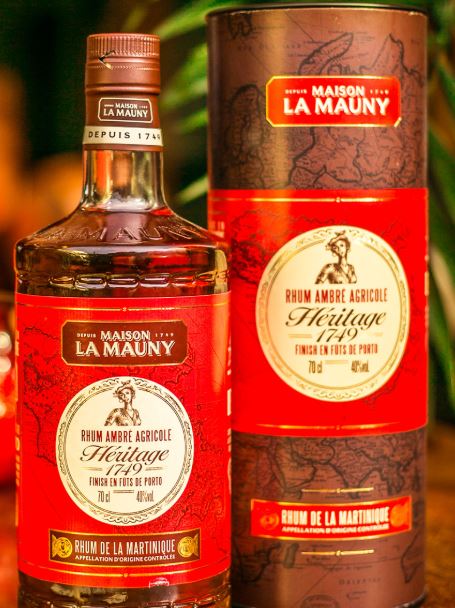 In 1923 La Mauny was sold to Théodore and Georges Bellonnie who enlarged and brought in new facilities such as a distillation column, new grinding mills and a steam engine. The distillery expanded hugely thanks to increased output and good marketing strategies and La Mauny rhums began to be exported around 1950. In 1970, after the Bellonnie brothers had both passed away, the Bordeaux traders and old-Martinique family of Bourdillon teamed up with Théodore Bellonnie’s widow and created the BBS Group. The company grew strongly, launching on the French market in 1977. Jean Pierre Bourdillon, who ran the new group, undertook to modernize La Mauny. He began by reorganizing the fields in order to make them accessible to mechanical harvesting and built a new distillery in 1984 (with a fourth mill, a three column still and a new boiler) a few hundred meters from the old one, increasing the cane crushing capacity and buying the equipment of the Saint James distillery in Acaiou, unused since 1958.
In 1923 La Mauny was sold to Théodore and Georges Bellonnie who enlarged and brought in new facilities such as a distillation column, new grinding mills and a steam engine. The distillery expanded hugely thanks to increased output and good marketing strategies and La Mauny rhums began to be exported around 1950. In 1970, after the Bellonnie brothers had both passed away, the Bordeaux traders and old-Martinique family of Bourdillon teamed up with Théodore Bellonnie’s widow and created the BBS Group. The company grew strongly, launching on the French market in 1977. Jean Pierre Bourdillon, who ran the new group, undertook to modernize La Mauny. He began by reorganizing the fields in order to make them accessible to mechanical harvesting and built a new distillery in 1984 (with a fourth mill, a three column still and a new boiler) a few hundred meters from the old one, increasing the cane crushing capacity and buying the equipment of the Saint James distillery in Acaiou, unused since 1958.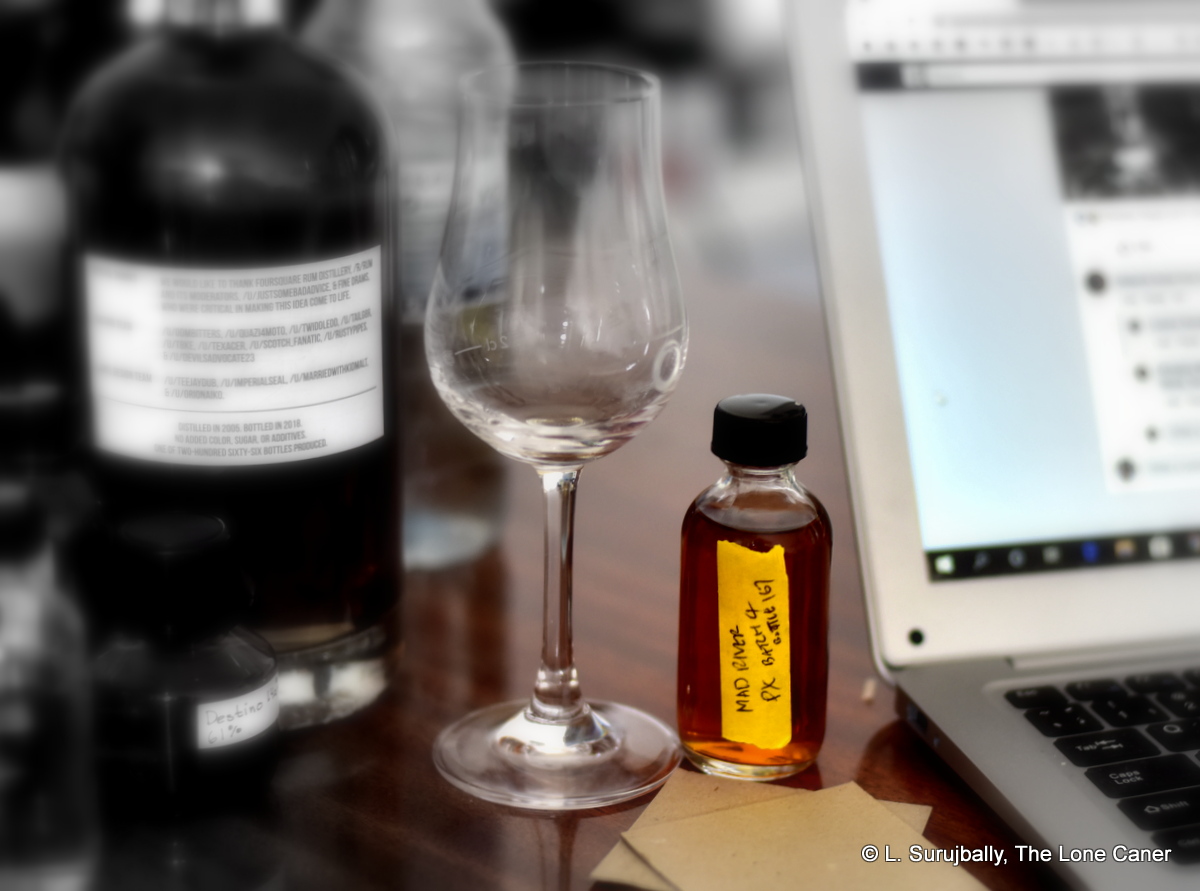
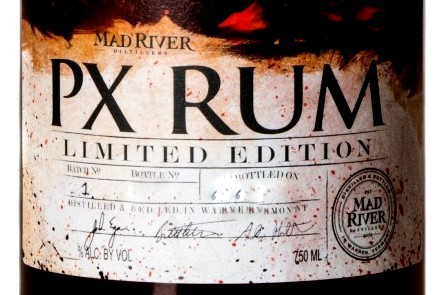
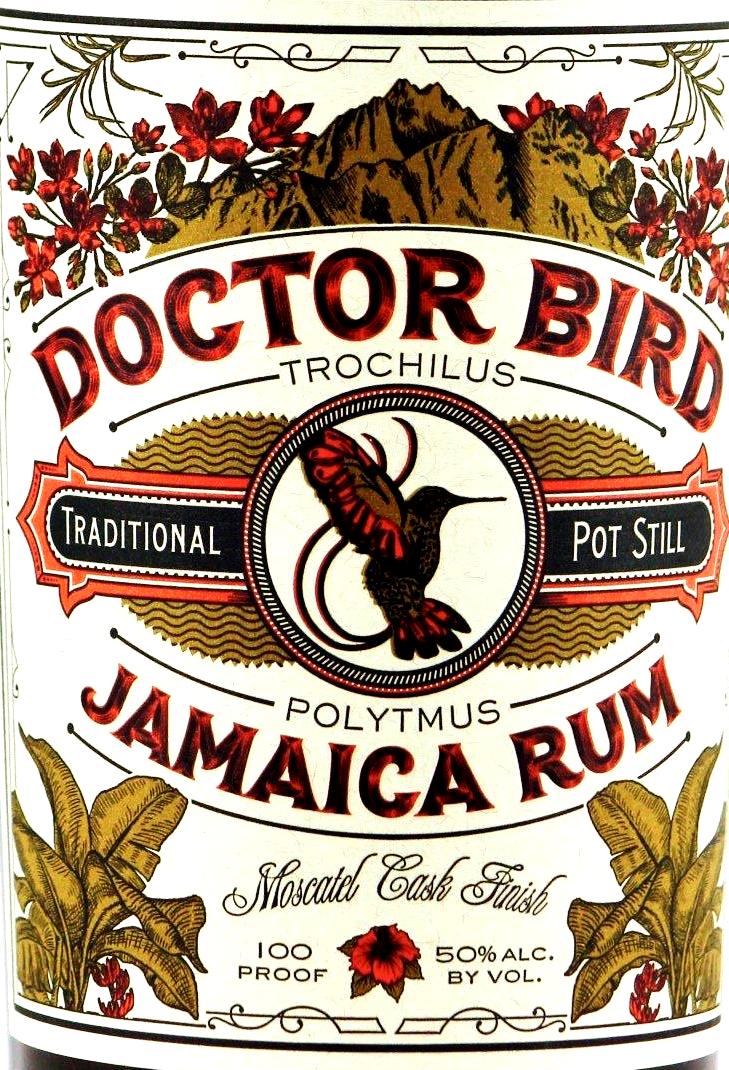 The strangely named Doctor Bird rum is another company’s response to
The strangely named Doctor Bird rum is another company’s response to 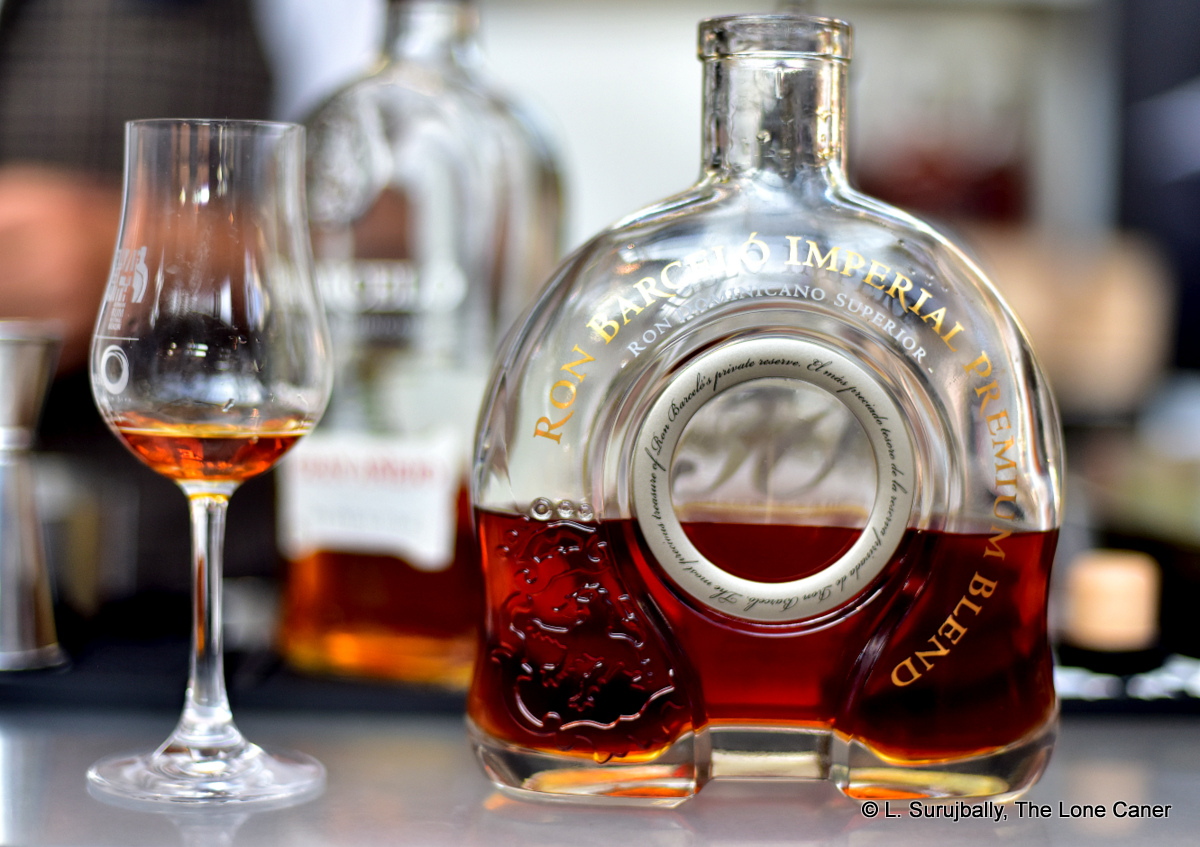
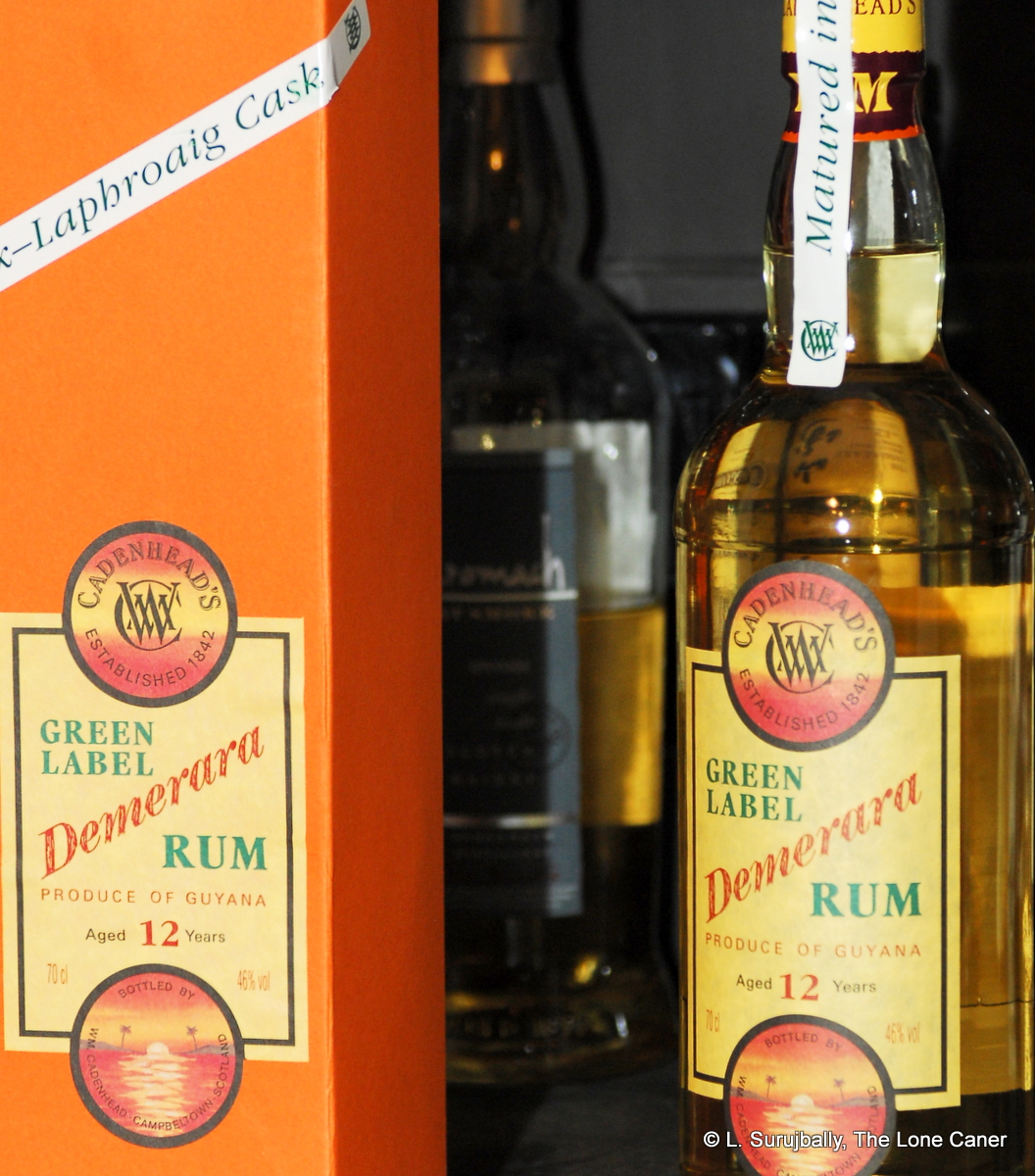
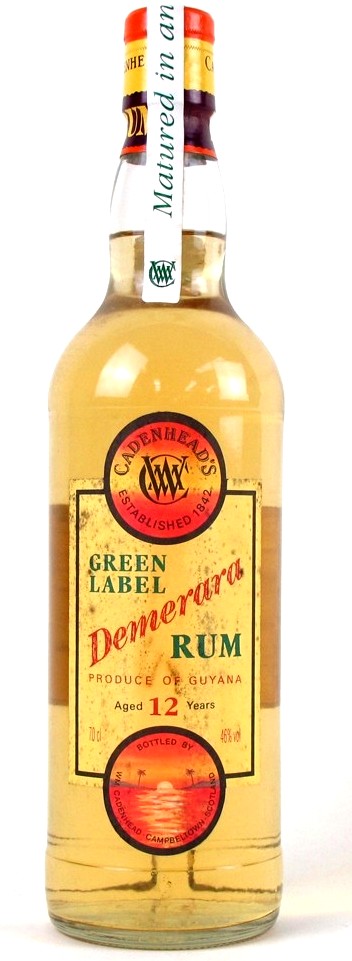 Anyway, this was a 12 year old, continentally-aged Guyanese rum (no still is mentioned, alas), of unknown outturn, aged 12 years in Laphroaig whisky casks and released at the 46% strength that was once a near standard for rums brought out by
Anyway, this was a 12 year old, continentally-aged Guyanese rum (no still is mentioned, alas), of unknown outturn, aged 12 years in Laphroaig whisky casks and released at the 46% strength that was once a near standard for rums brought out by 
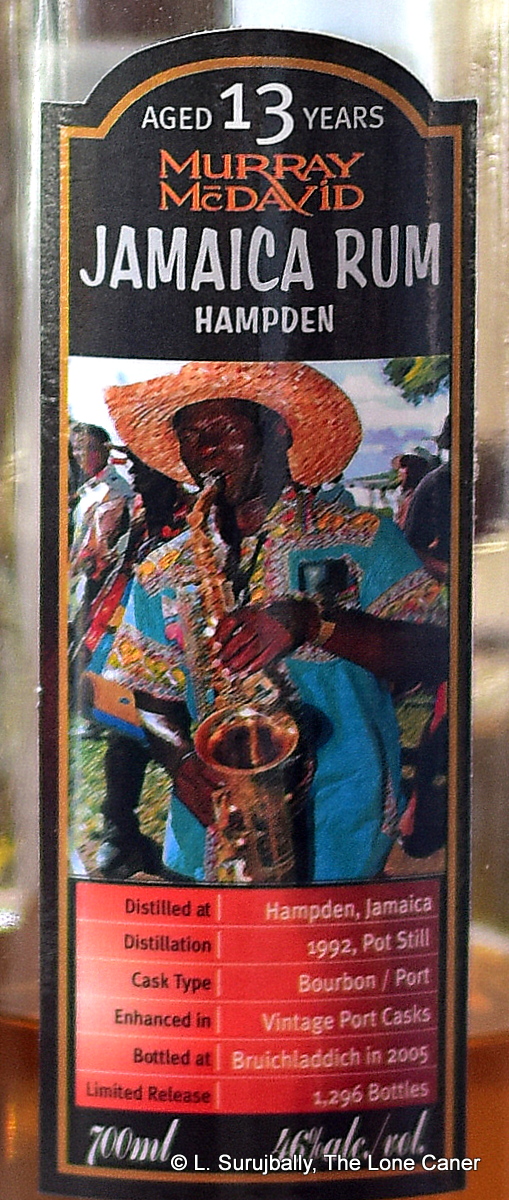 Tasting notes: definitely Jamaican, that hogo and funk was unmistakable, though it seemed more muted than the fierce cask strength Hampdens we’ve been seeing of late. It smelled initially of pencil shavings, crisp acetones, nail polish remover, a freshly painted room and glue. After opening up, I went back some minutes later and found softer aromas – red wine, molasses, honey, chocolate, and cream cheese and salted butter on fresh croissants, really yummy. And this is not to ignore the ever-present sense of fruitiness – dark grapes, black cherries, ripe mangoes, papayas, gooseberries and some bananas, just enough to round off the entire nose.
Tasting notes: definitely Jamaican, that hogo and funk was unmistakable, though it seemed more muted than the fierce cask strength Hampdens we’ve been seeing of late. It smelled initially of pencil shavings, crisp acetones, nail polish remover, a freshly painted room and glue. After opening up, I went back some minutes later and found softer aromas – red wine, molasses, honey, chocolate, and cream cheese and salted butter on fresh croissants, really yummy. And this is not to ignore the ever-present sense of fruitiness – dark grapes, black cherries, ripe mangoes, papayas, gooseberries and some bananas, just enough to round off the entire nose.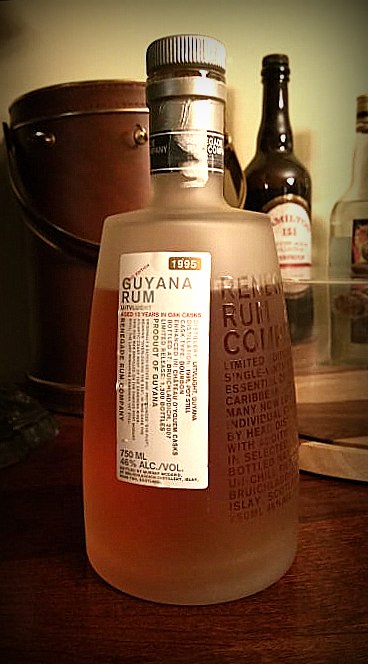
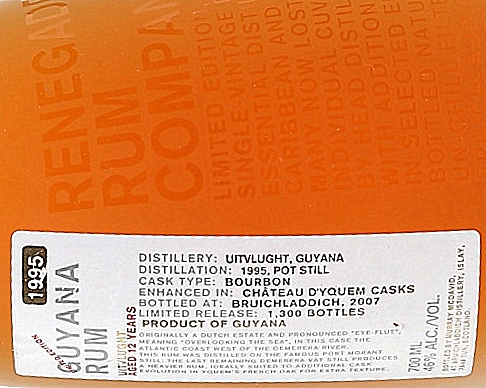
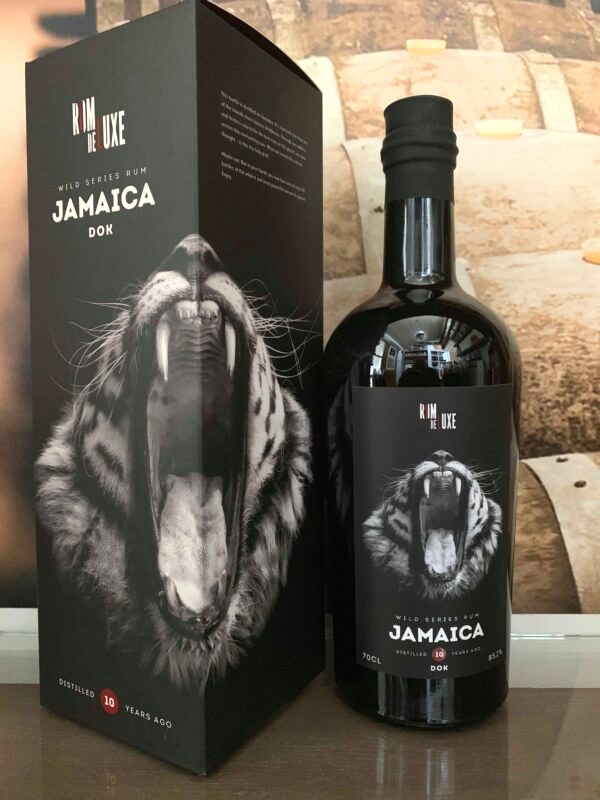
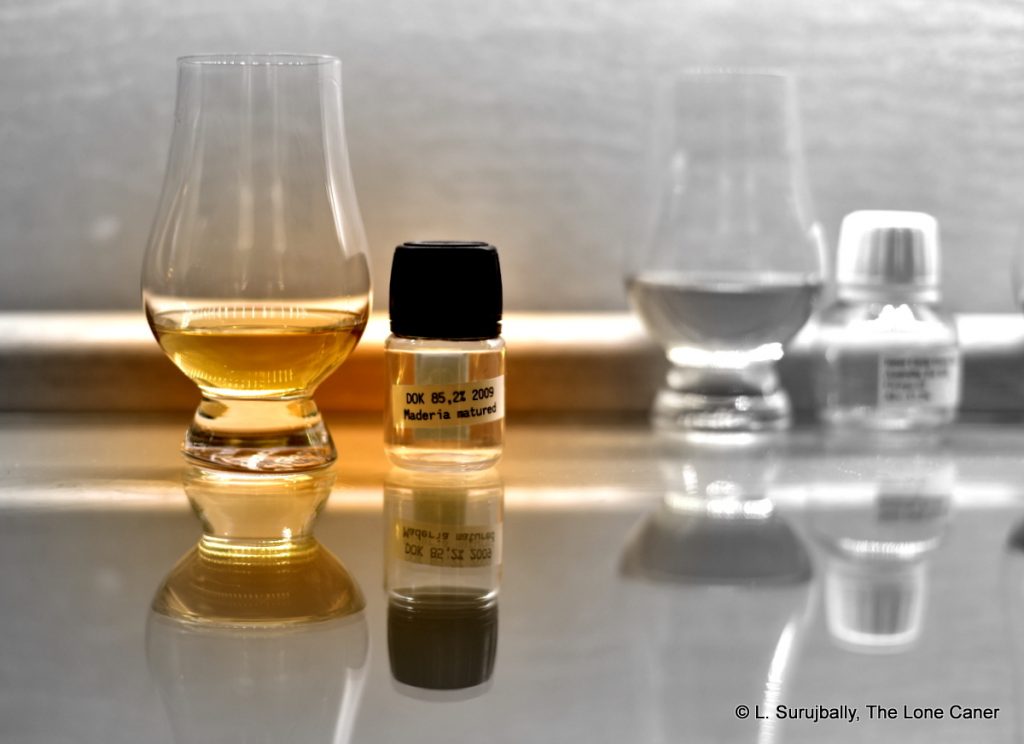

 He considers for a moment, then shakes his head and pours me a delicate, neat shot of the Mauritius 2008. “Better start with this one. It’s a bit more…mellow. And anyway, you tried the Ghana last year in Berlin. If you need to, you can try it again later.”
He considers for a moment, then shakes his head and pours me a delicate, neat shot of the Mauritius 2008. “Better start with this one. It’s a bit more…mellow. And anyway, you tried the Ghana last year in Berlin. If you need to, you can try it again later.”

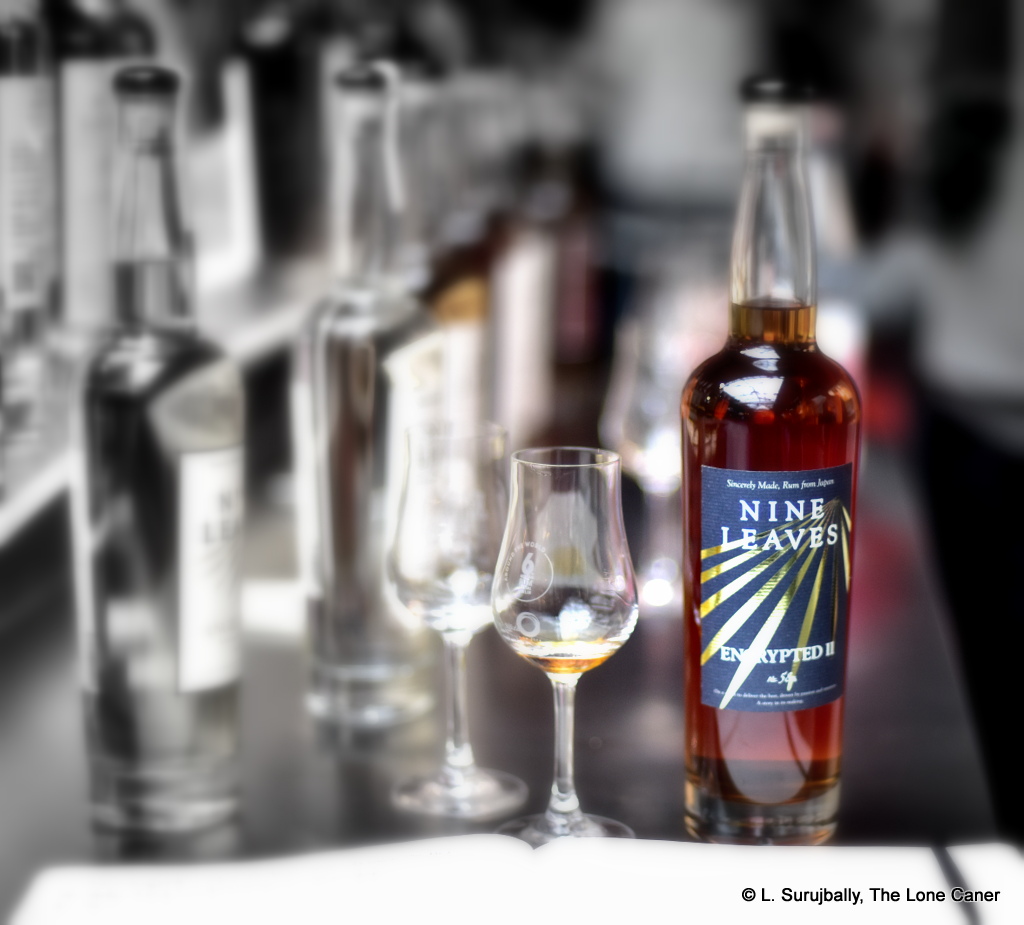
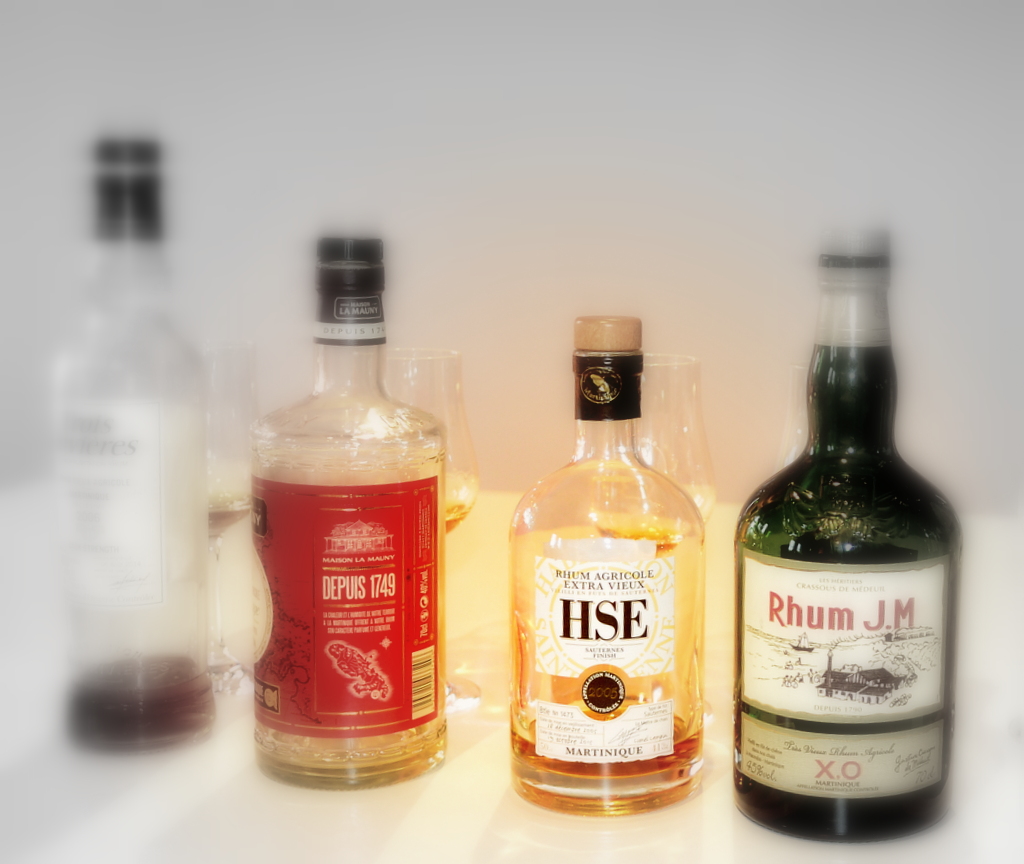
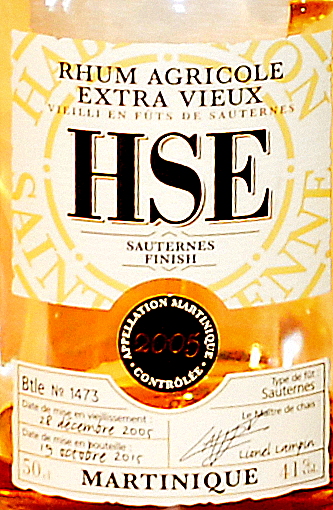 Given that it is nine years tropical ageing plus another year in the Sauternes casks, I think we could be expected to have a pretty interesting profile — and I wasn’t disappointed (though the low 41% strength did give me pause). The initial smells were grassy and wine-y at the same time, a combination of musk and crisp light aromas that melded well. There were green apples, grapes, the tart acidity of cider mixed in with some ginger and cinnamon, a dollop of brine and a few olives, freshly mown wet grass and well-controlled citrus peel behind it all.
Given that it is nine years tropical ageing plus another year in the Sauternes casks, I think we could be expected to have a pretty interesting profile — and I wasn’t disappointed (though the low 41% strength did give me pause). The initial smells were grassy and wine-y at the same time, a combination of musk and crisp light aromas that melded well. There were green apples, grapes, the tart acidity of cider mixed in with some ginger and cinnamon, a dollop of brine and a few olives, freshly mown wet grass and well-controlled citrus peel behind it all.